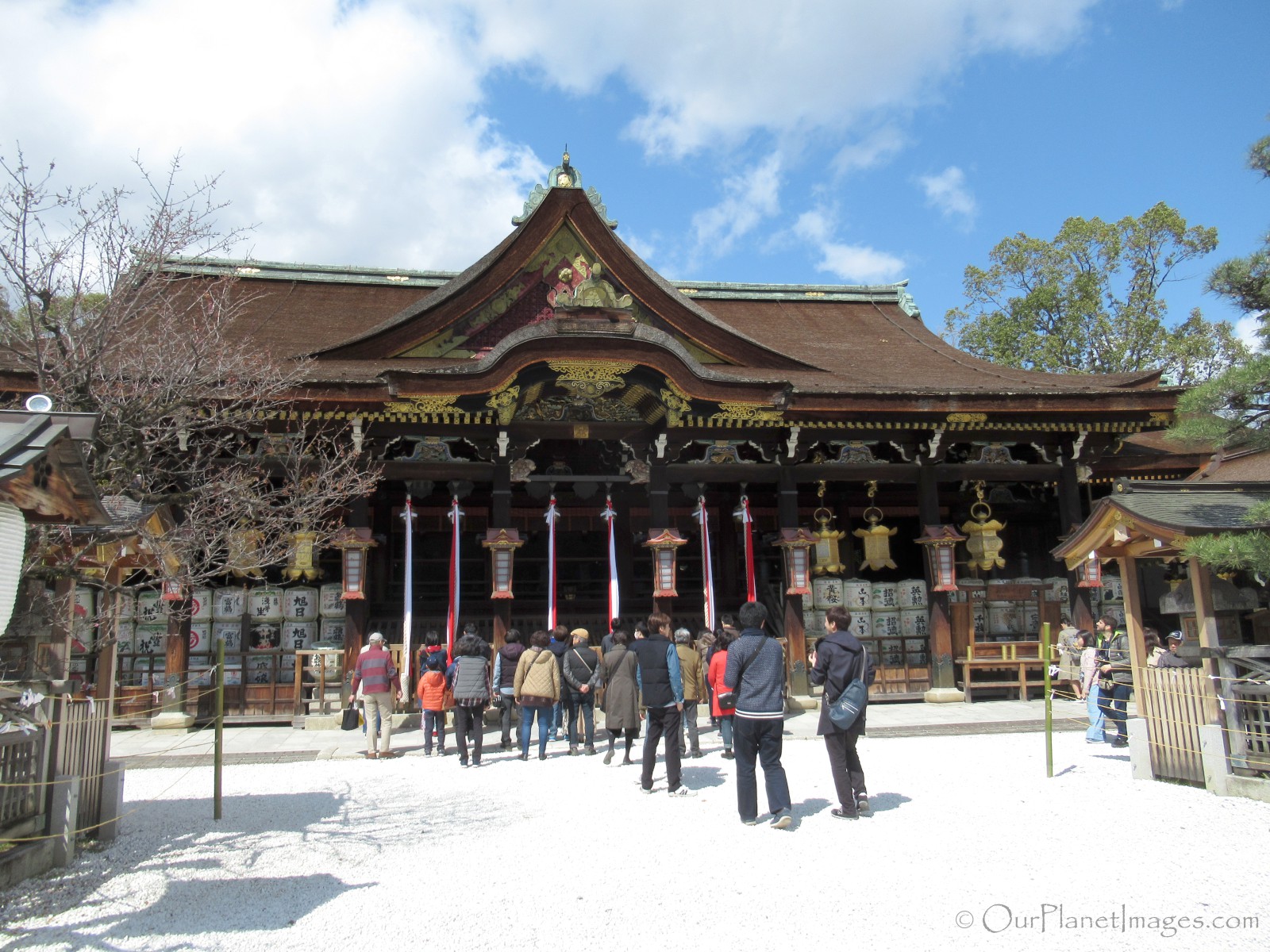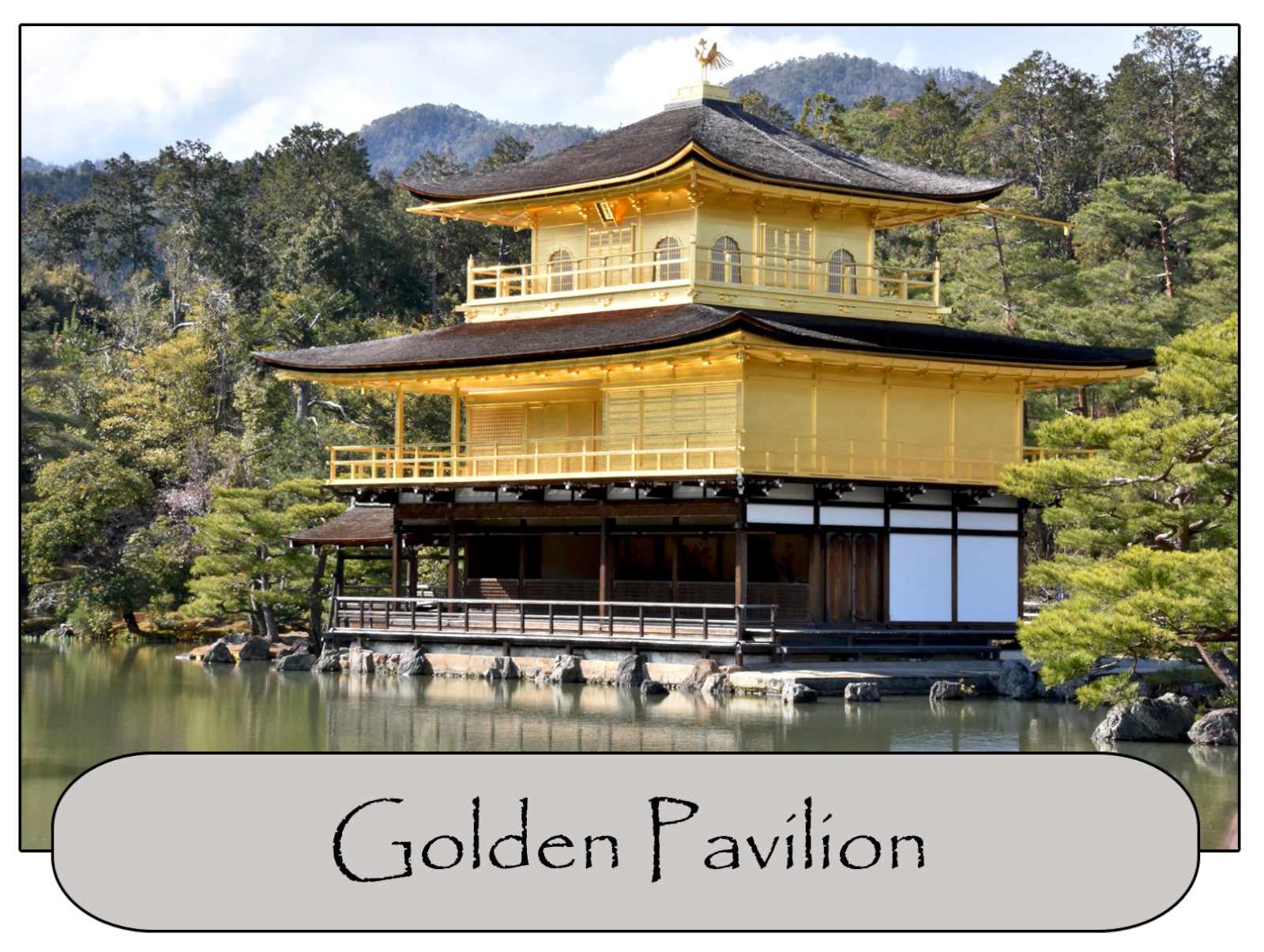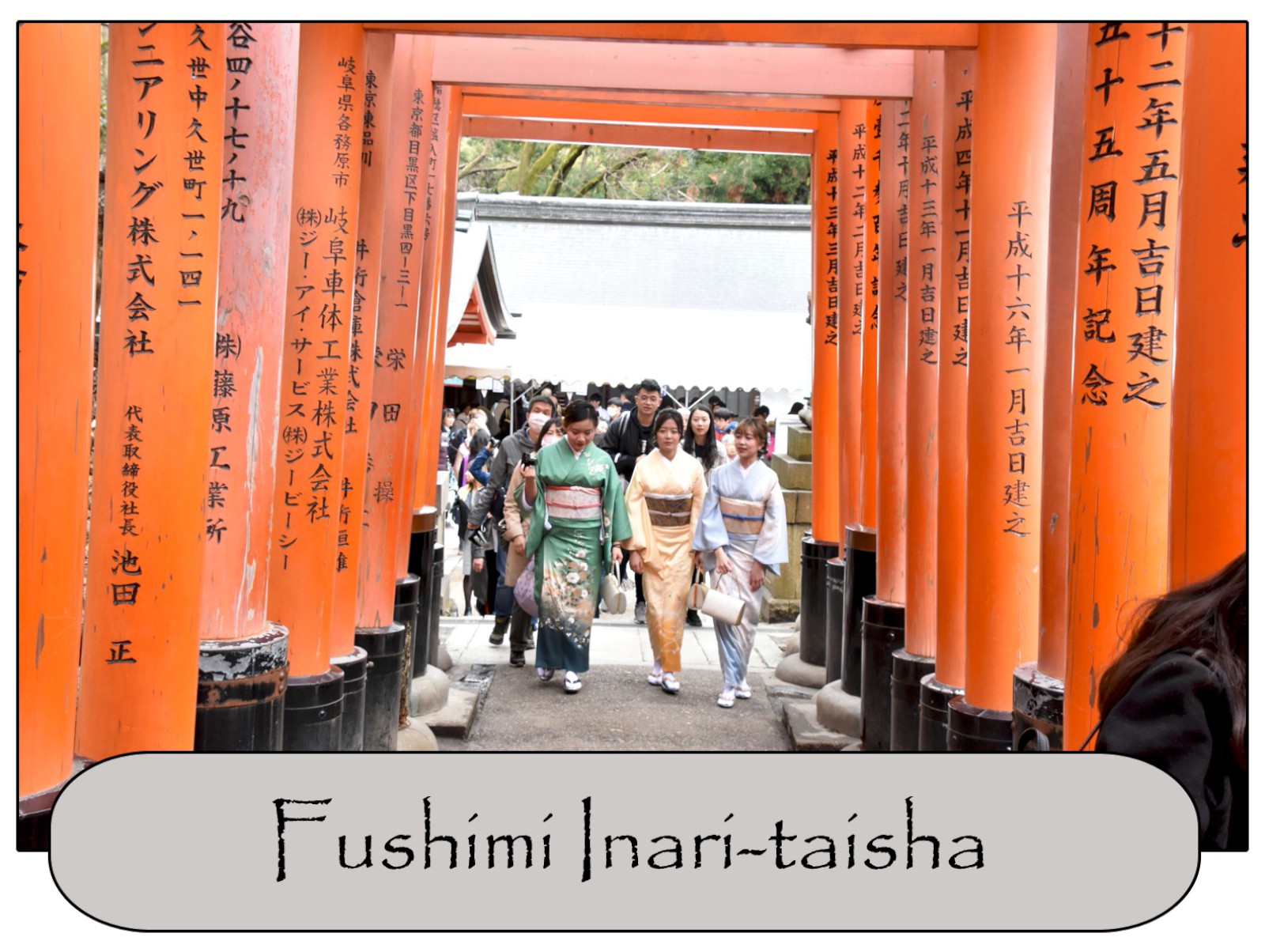The Kitano Tenmangu Shrine is dedicated to Tenjin (Sugawara-no-Michizane), the patron saint of students.
Kitano Tenmangu is a major Shinto shrine located northwest of Kyoto, Japan. The shrine is famous for its tea ceremony in February which is performed by apprentice geisha under 1,500 blooming plum trees.
Kitano Tenmangu was built in 947 AD in honor of poet and scholar Sugawara-no-Michizane, an advisor to the emperors Uda and Daigo. He was deified in 986 under the name of Tenjin and was the first time a human being was elevated to the status of a god. He became the god of honest and sincerity and currently considered the deity of studying and success in studies. Students come to the shrine from all over the country to pray for success in examinations, especially high school and university entrance exams.
The Kitano Tenmangu Shrine is one of the great shrines of Kyoto. It features ornate architecture and hundreds of plum trees which scent the air in the spring. The primary architectural features of the shrine are detailed below.
Sanko-mon Gate
The Sanko-mon Gate is an inner gate that leads to the main worship hall of the shrine. After passing through the gate there is a large open plaza that is enclosed by building with the main worship hall on the far side of the plaza.
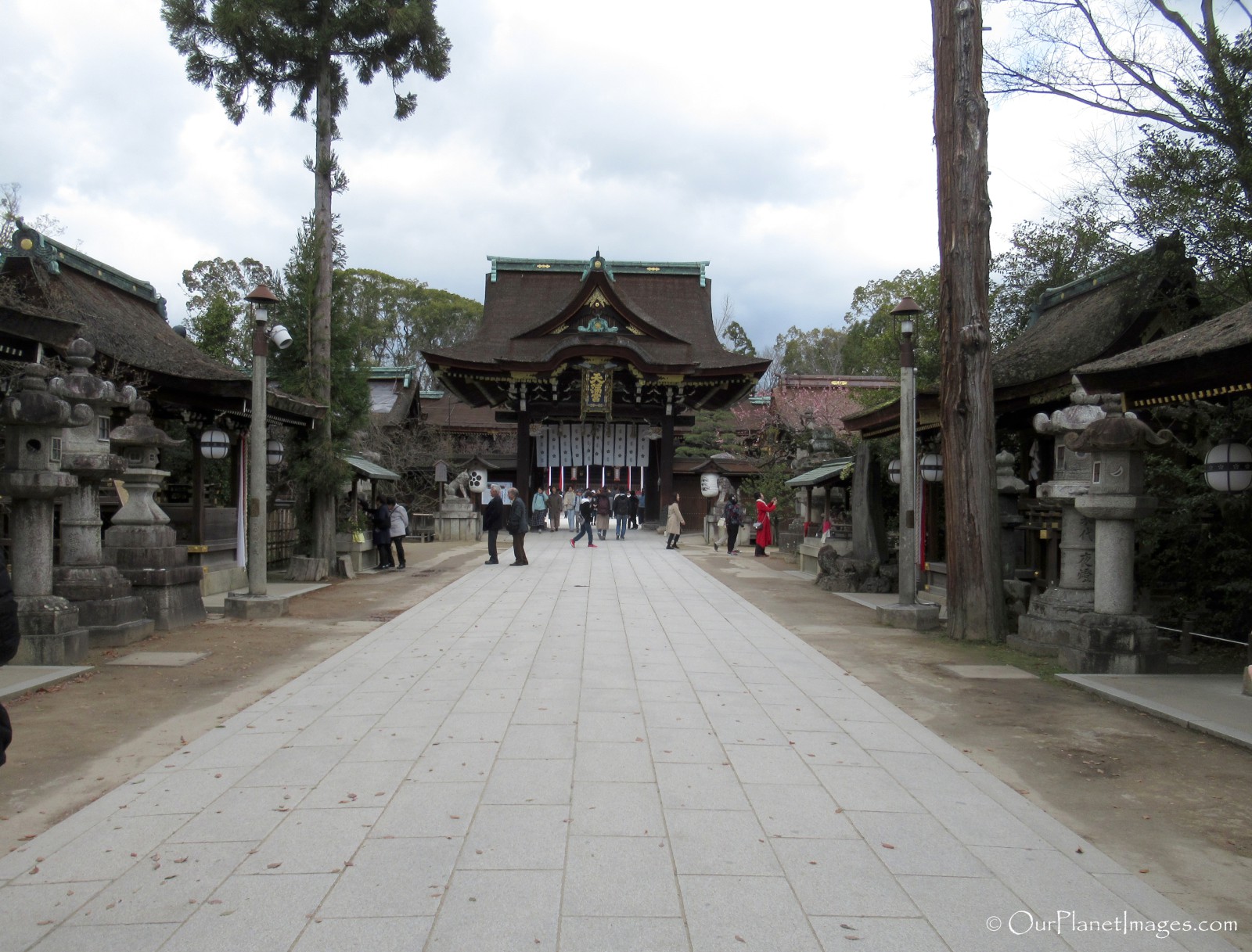
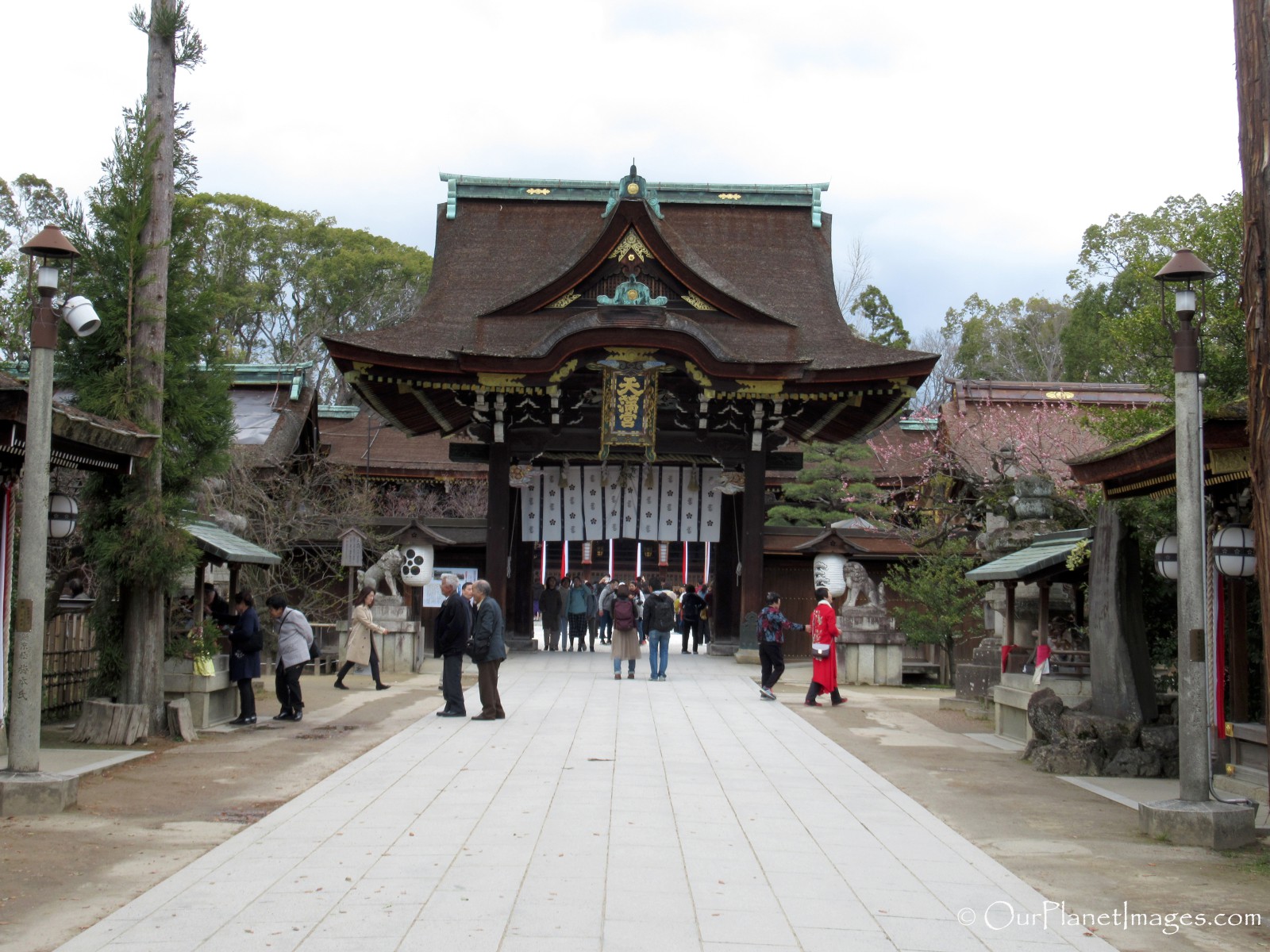
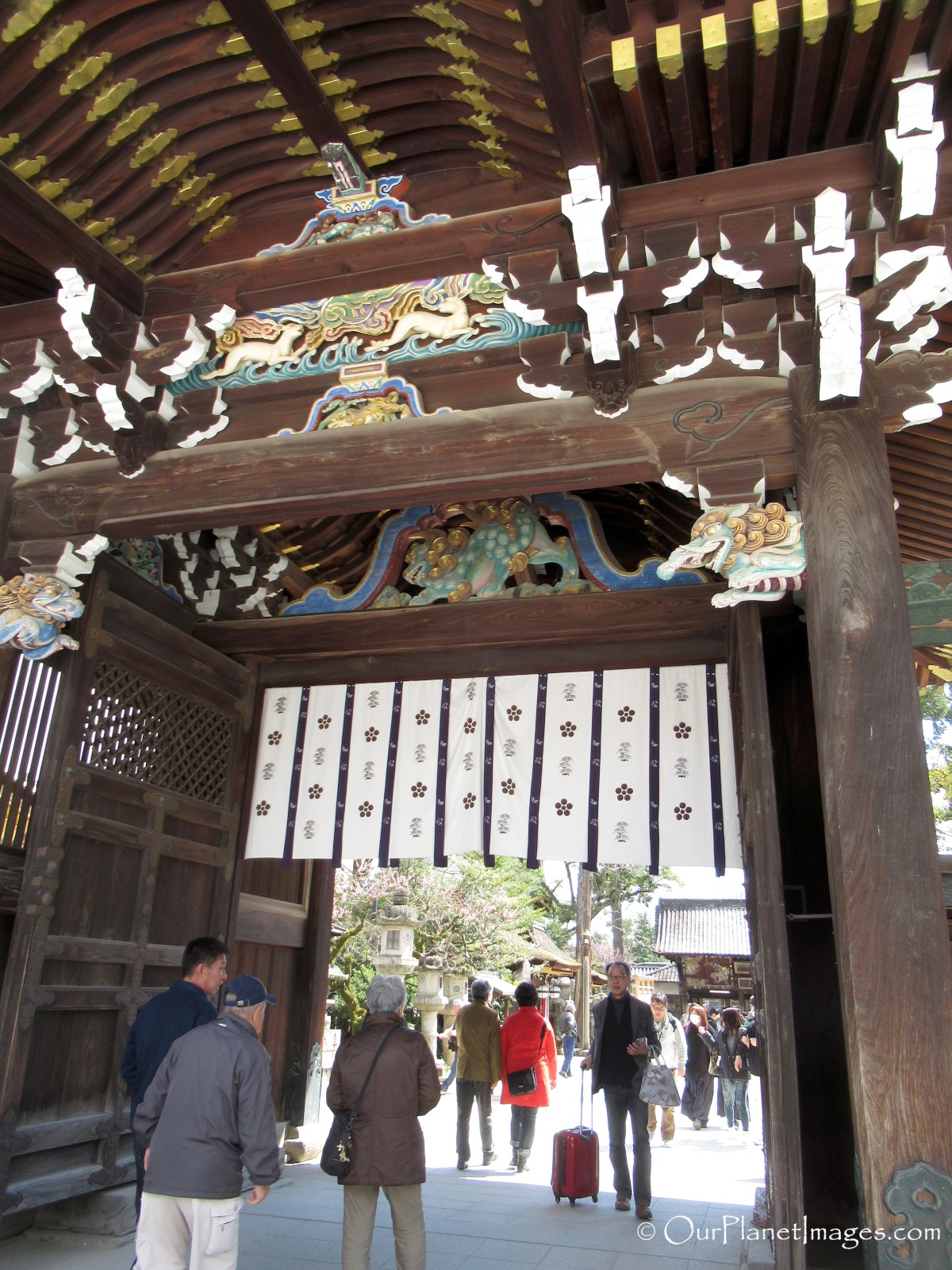
Main worship hall
The main worship hall is the most impressive building in the shrine and it is where most of the people visiting the shrine gather. The public is only allowed to enter the building if you apply for charms or prayers.
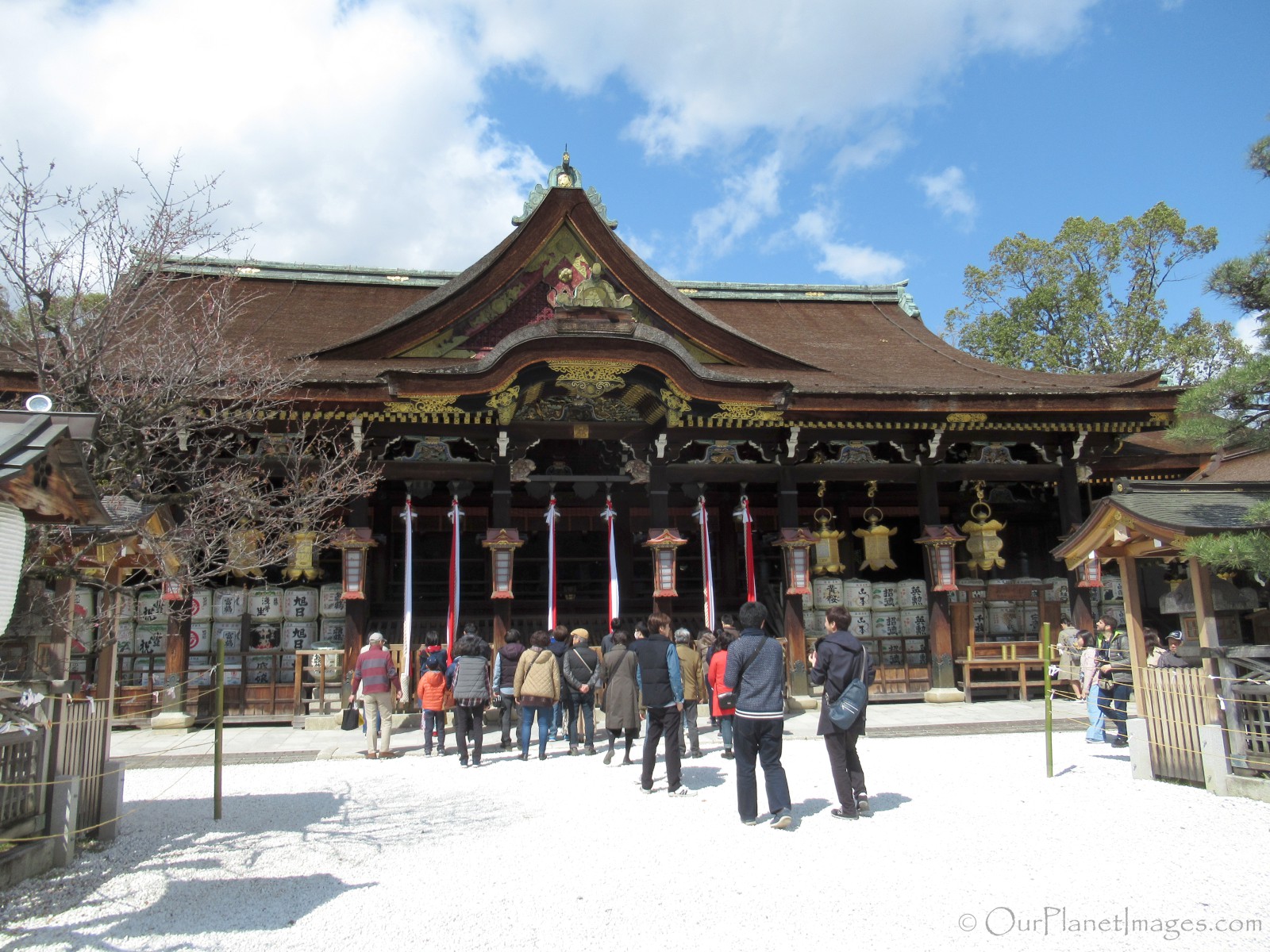
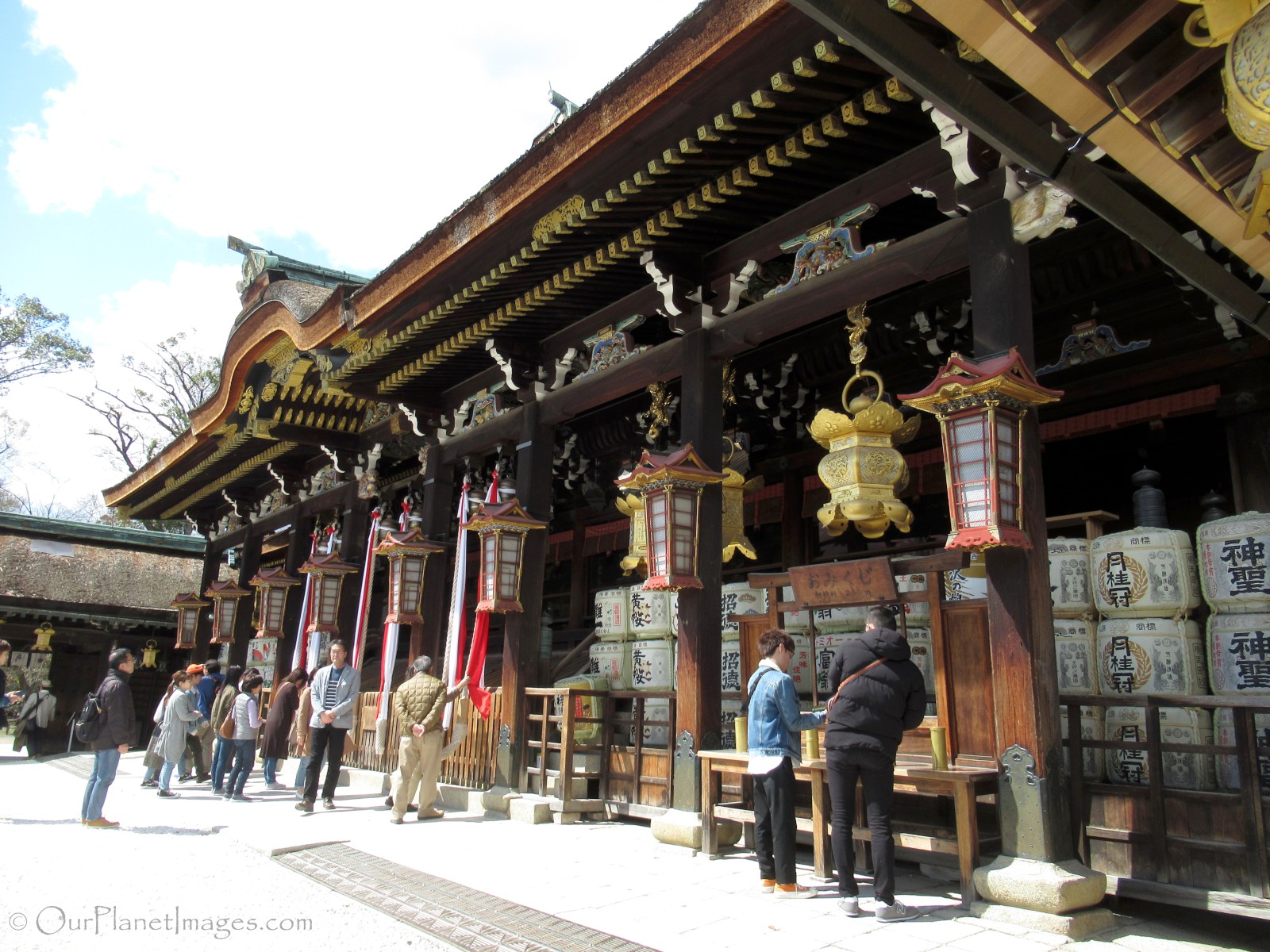
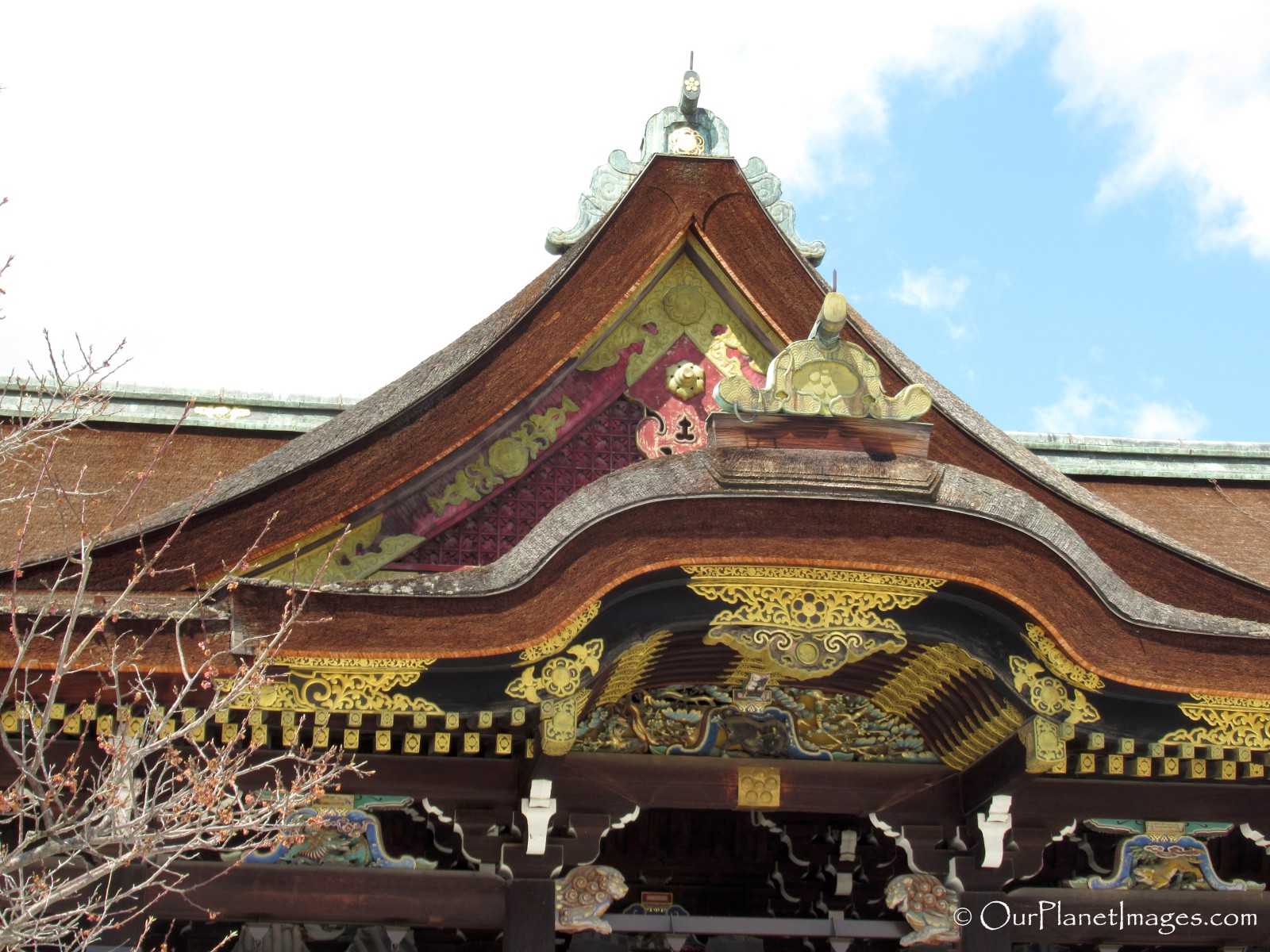
The front of the worship hall is lined with decorative lanterns and stacks of sake barrels. The lanterns are a combination of golden lanterns and a traditional style lantern and the sake barrels are very decorative and add to the cultural aesthetic of the shrine.
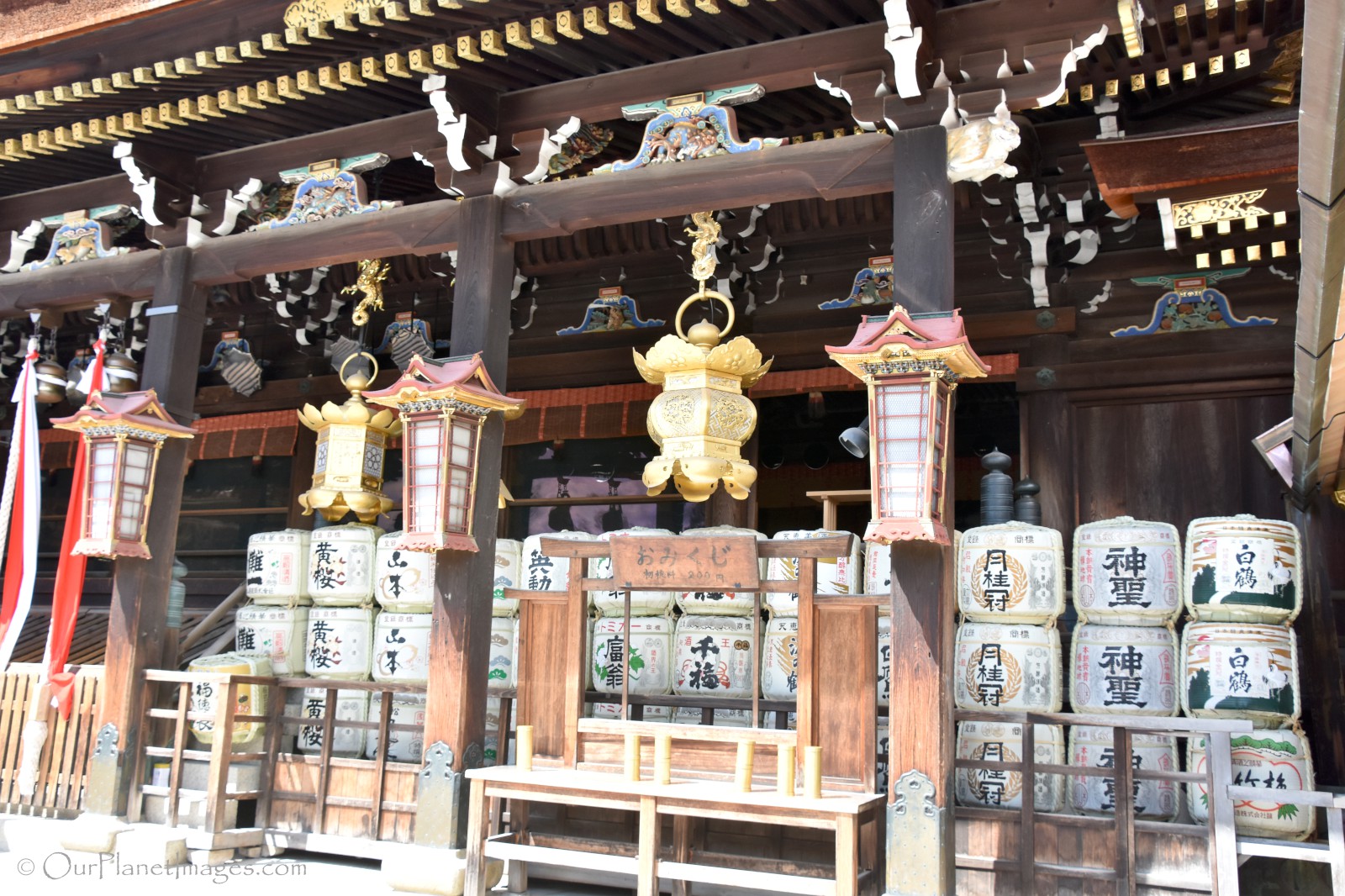
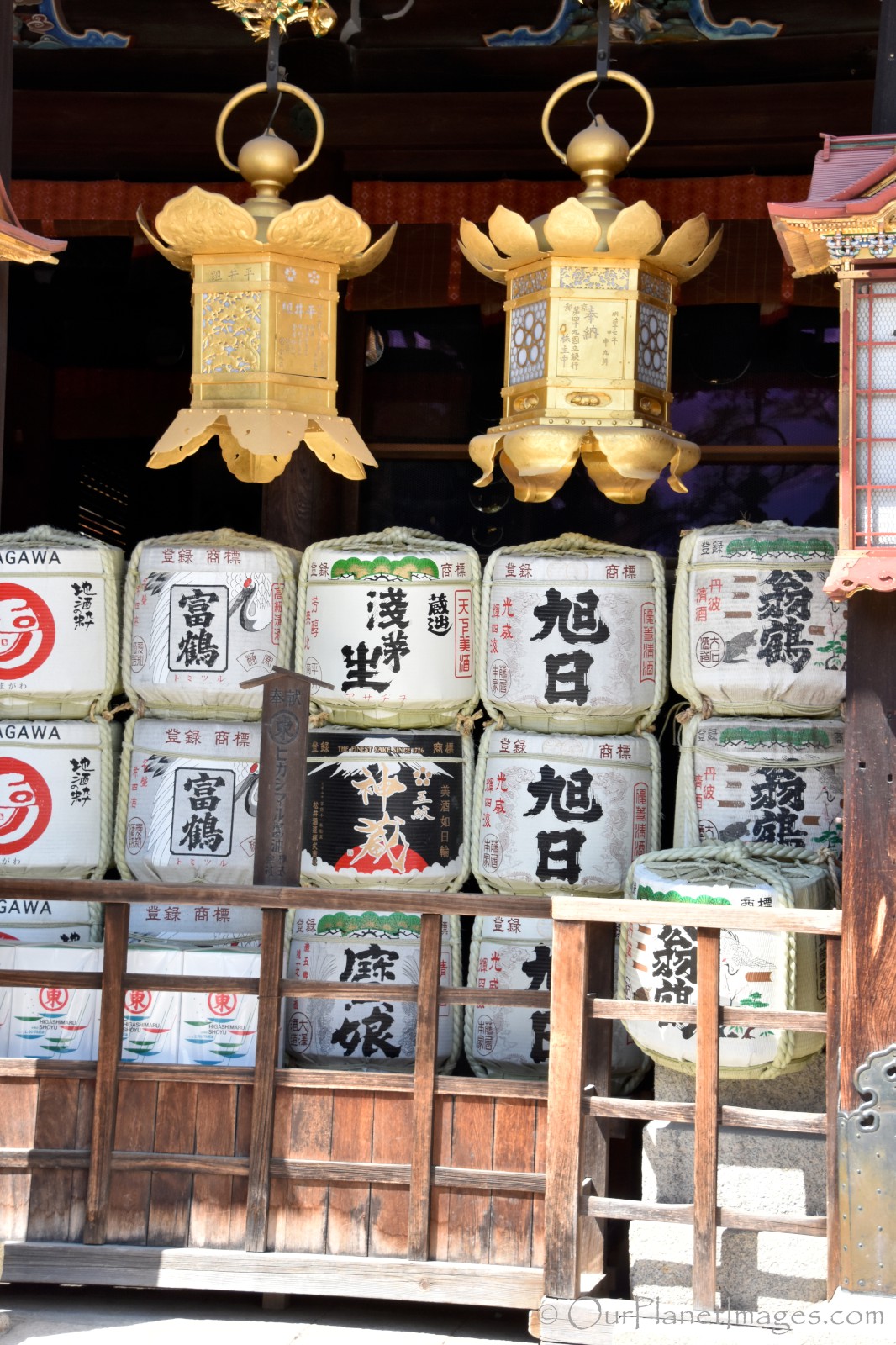
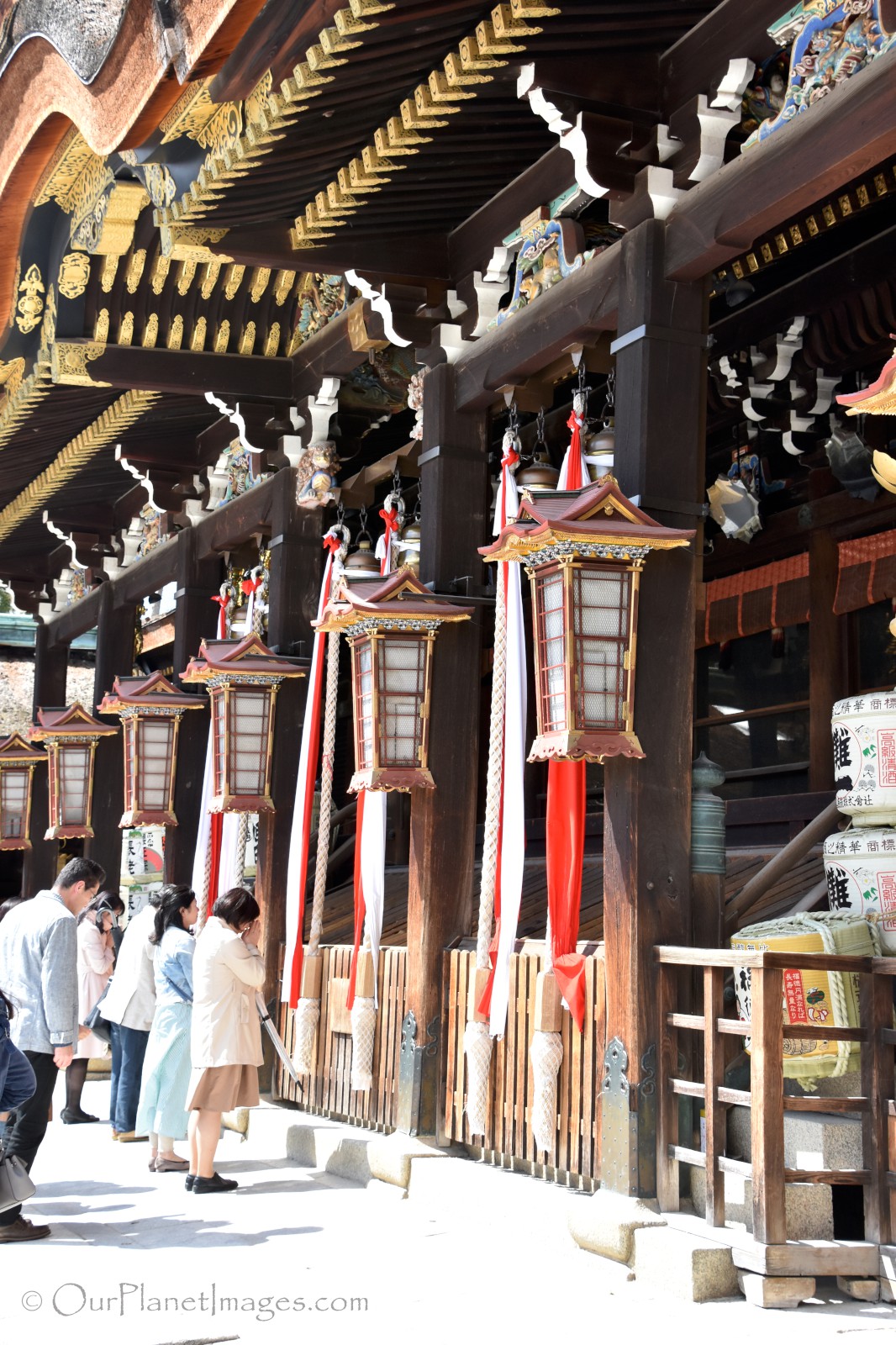
Just under the roof there are a series of colorful carvings. Some of the carvings are of tigers, dragons and mystical creatures.
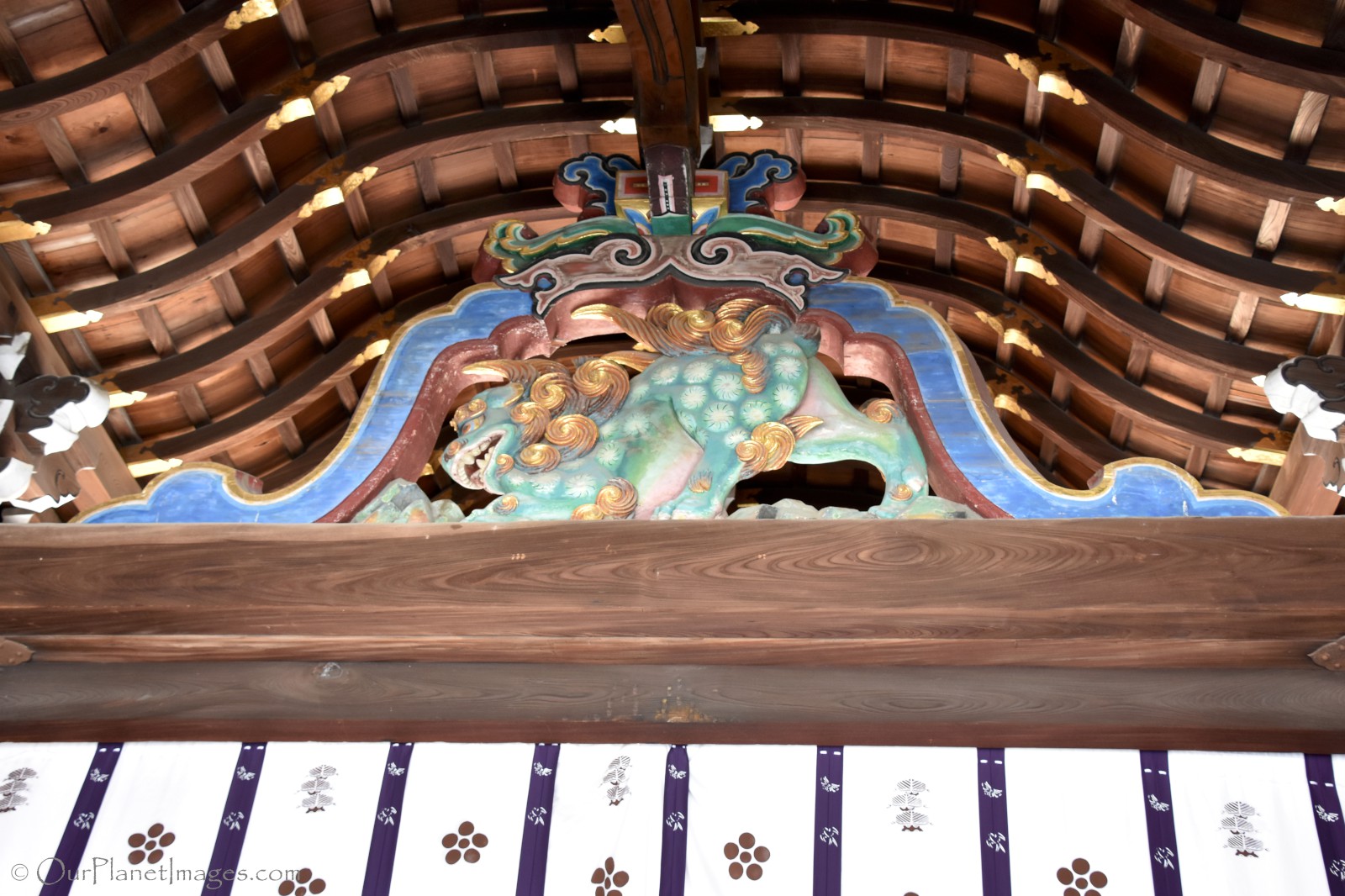
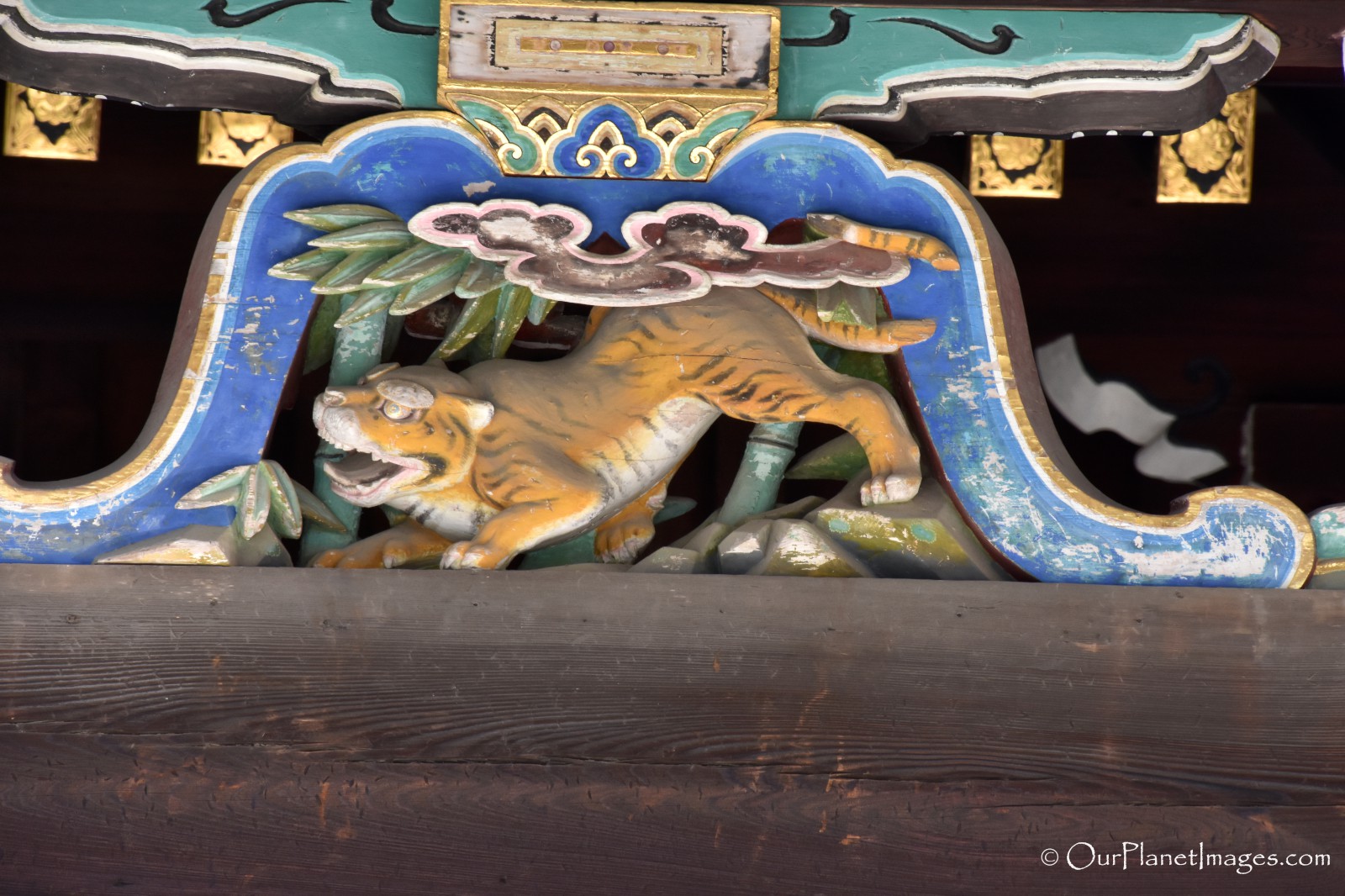
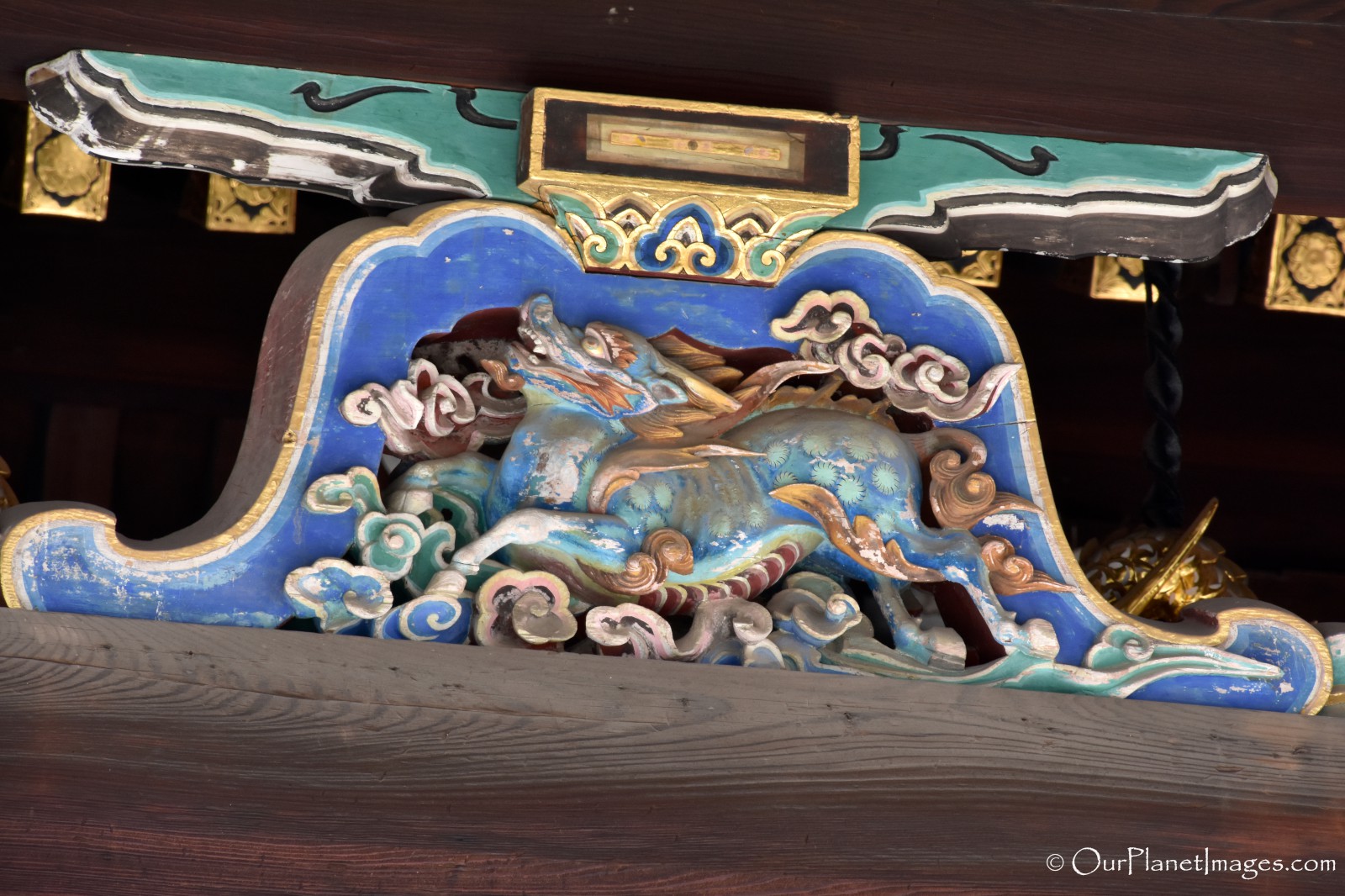
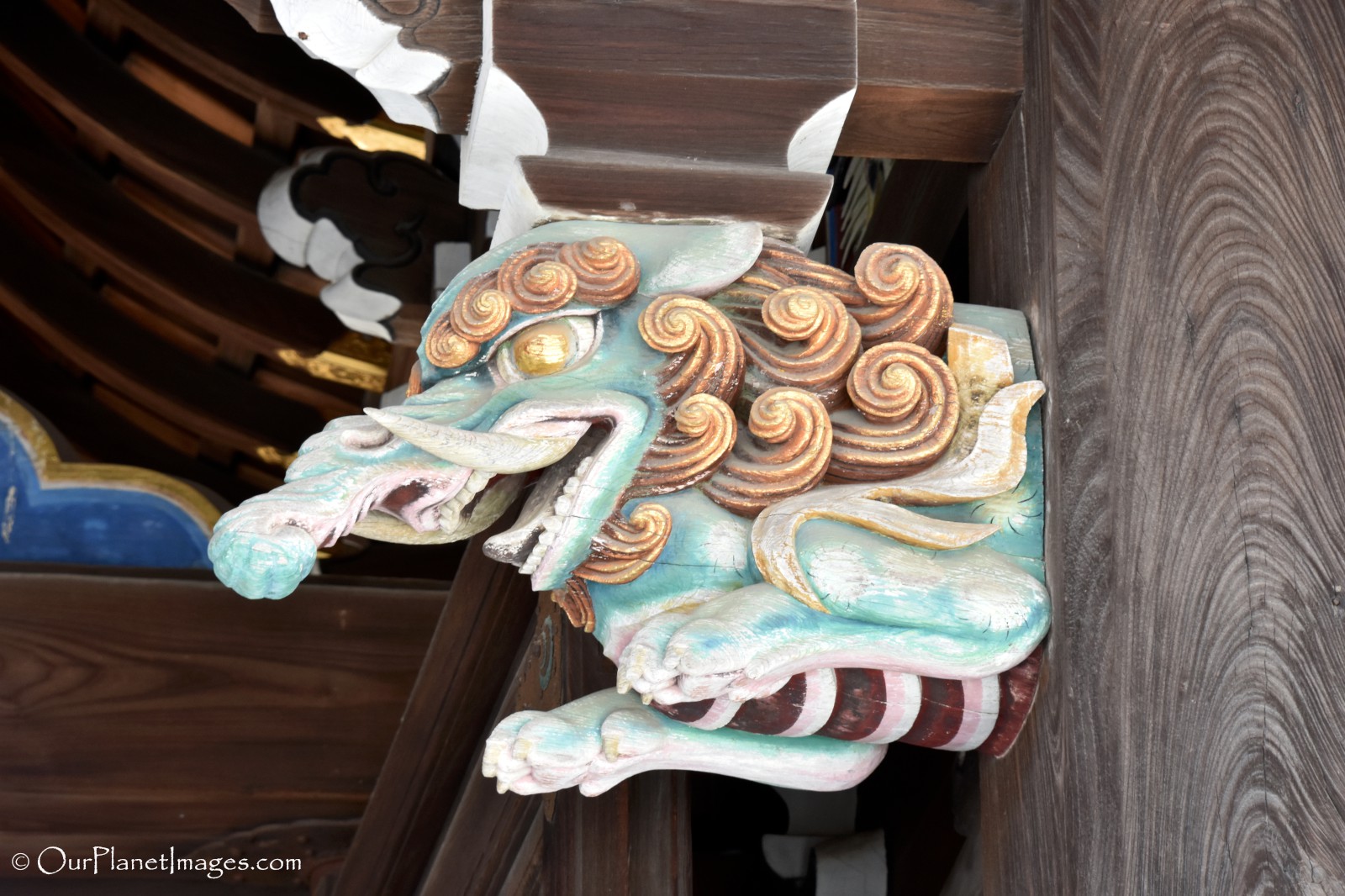
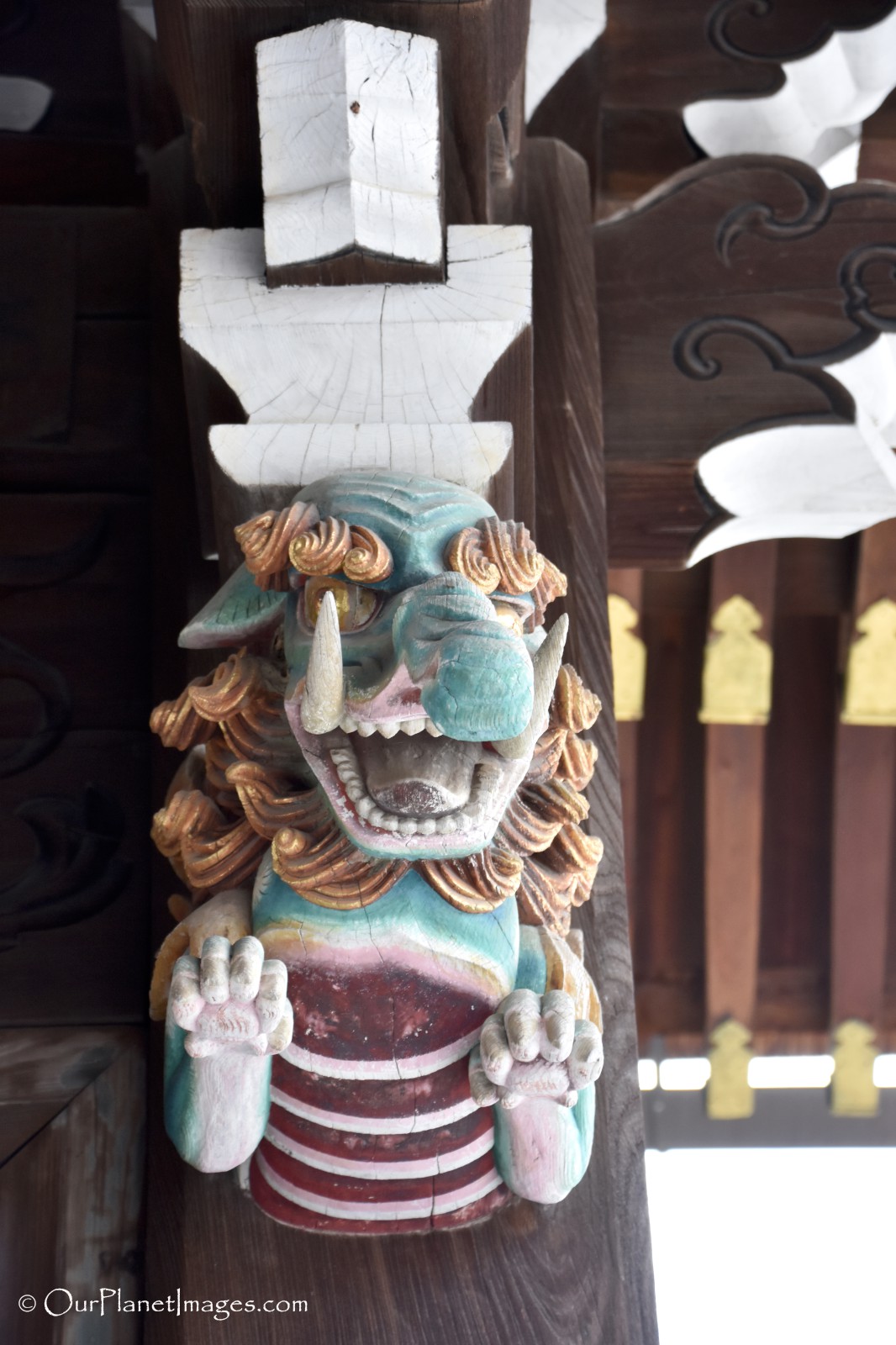
Main Sanctuary
The main sanctuary is directly behind the main worship hall and is attached to it through a common roof.
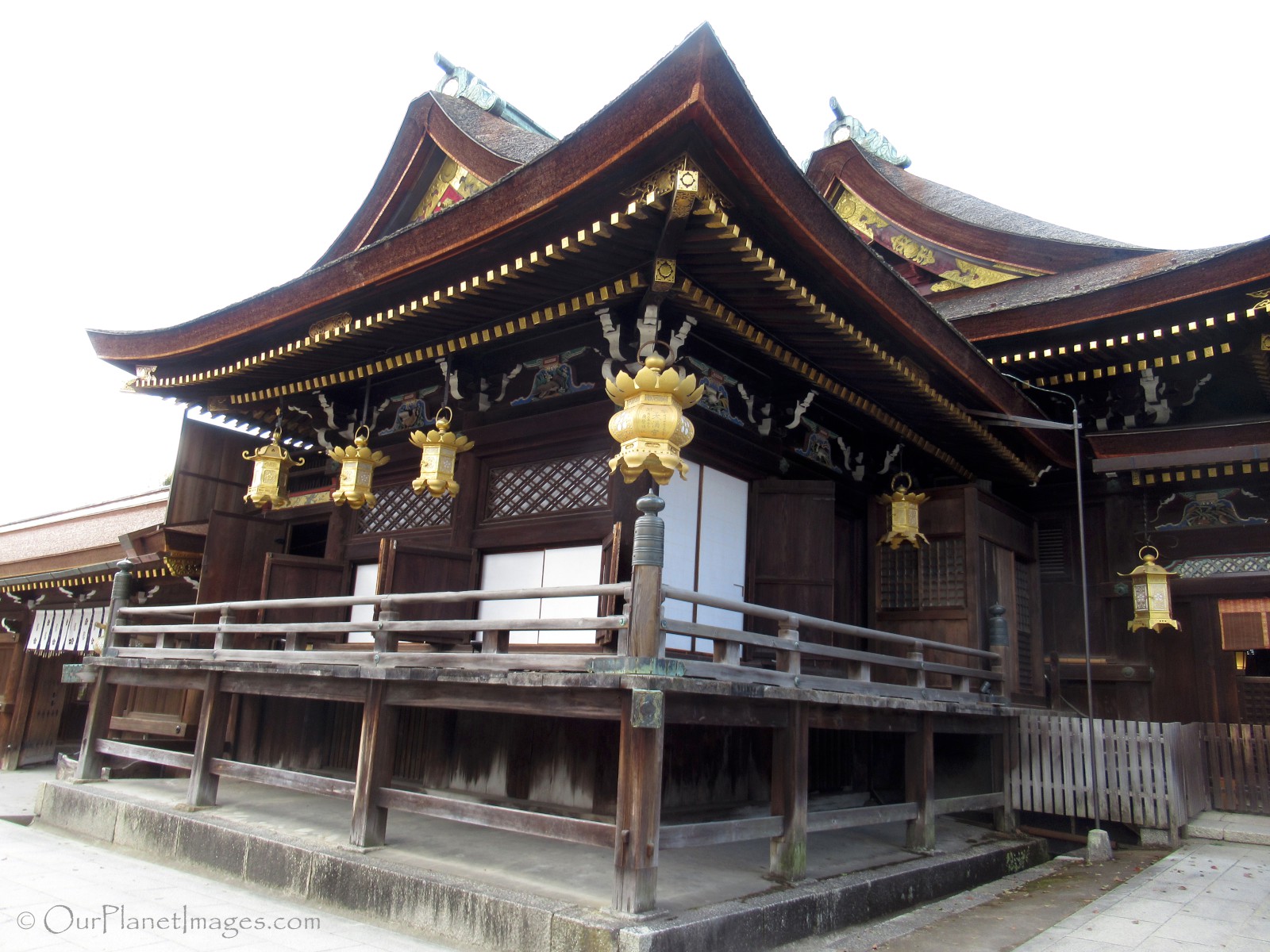
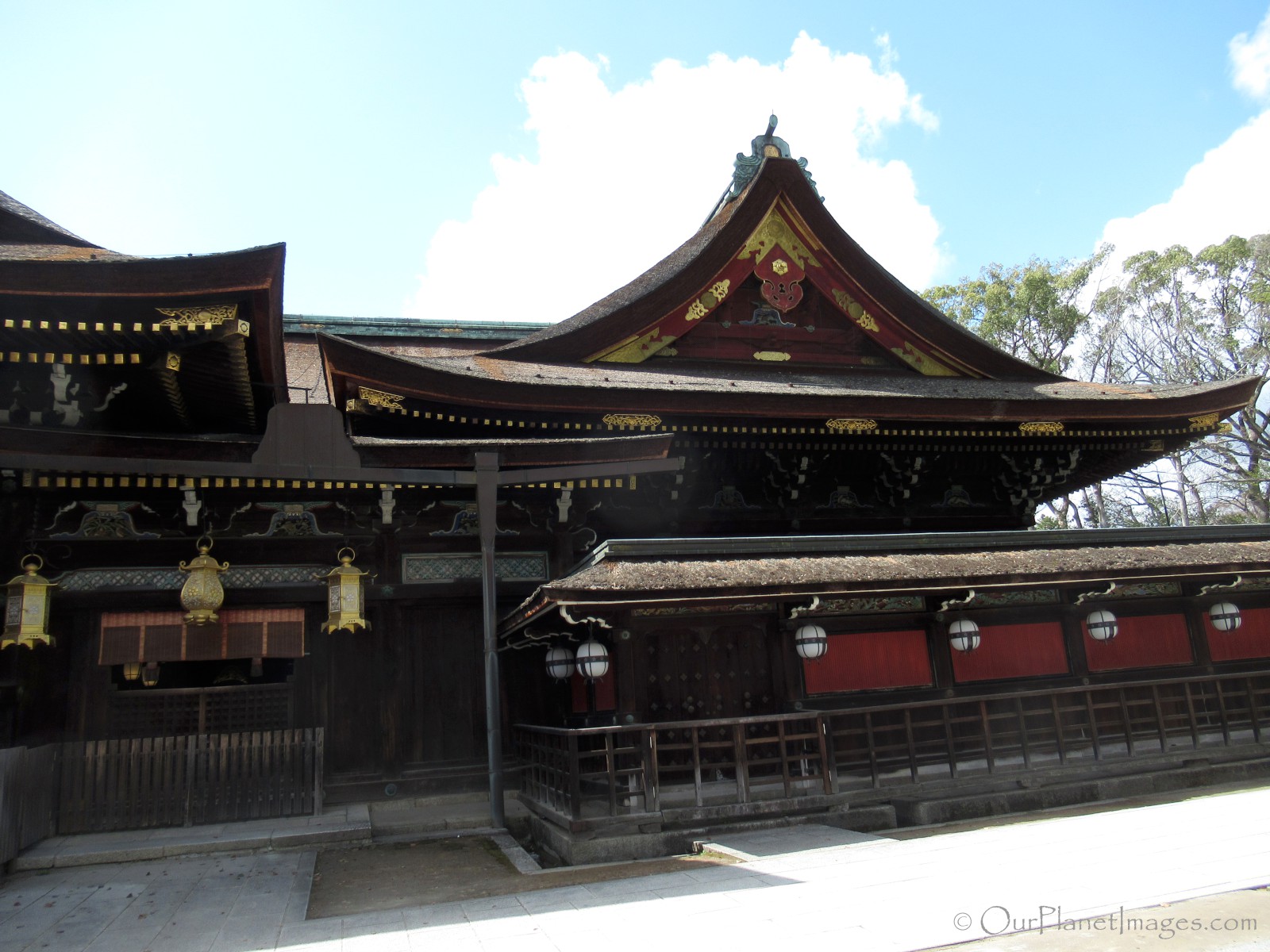
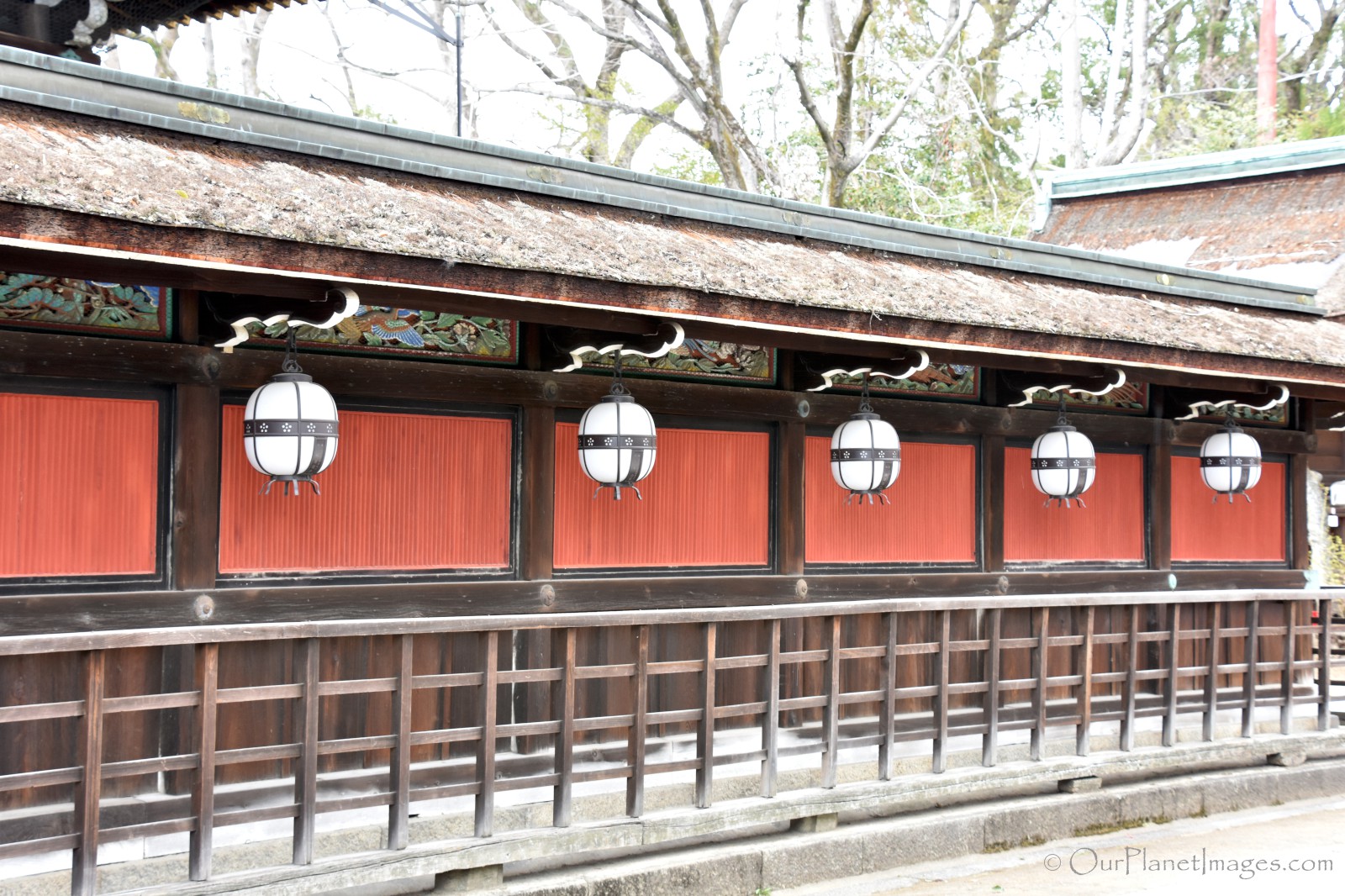
Treasure House
The treasure house building is a museum of artifacts that worshippers have offered in prayer. It exhibits picture scrolls, historical documents, swords, tea ceremony devices and other items. The treasure house is open to the public on the 25th of every month.
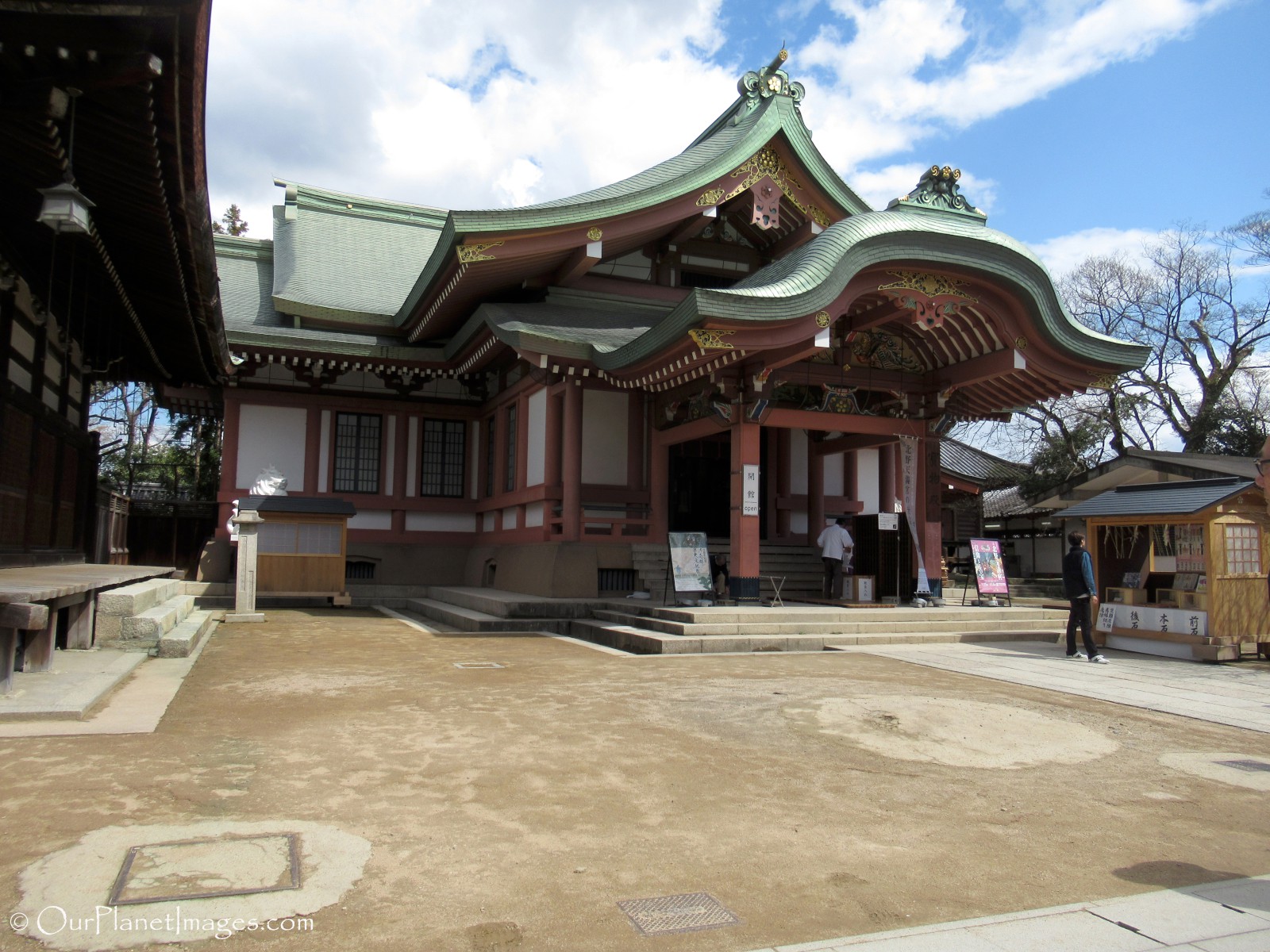
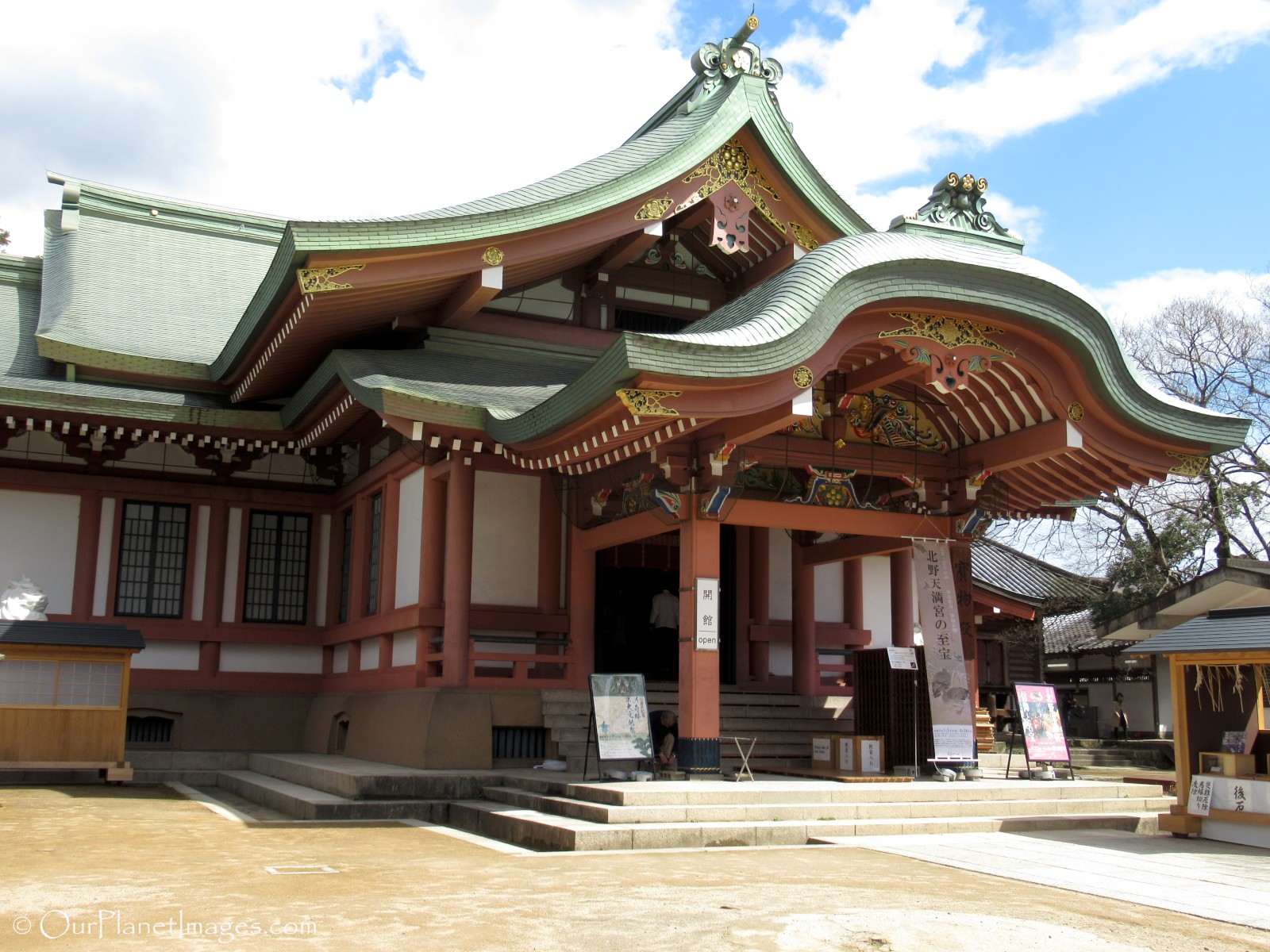
Romon tower gate
The Romon tower gate is the main entrance into the walled shrine. The photo below is from inside the shrine look out.
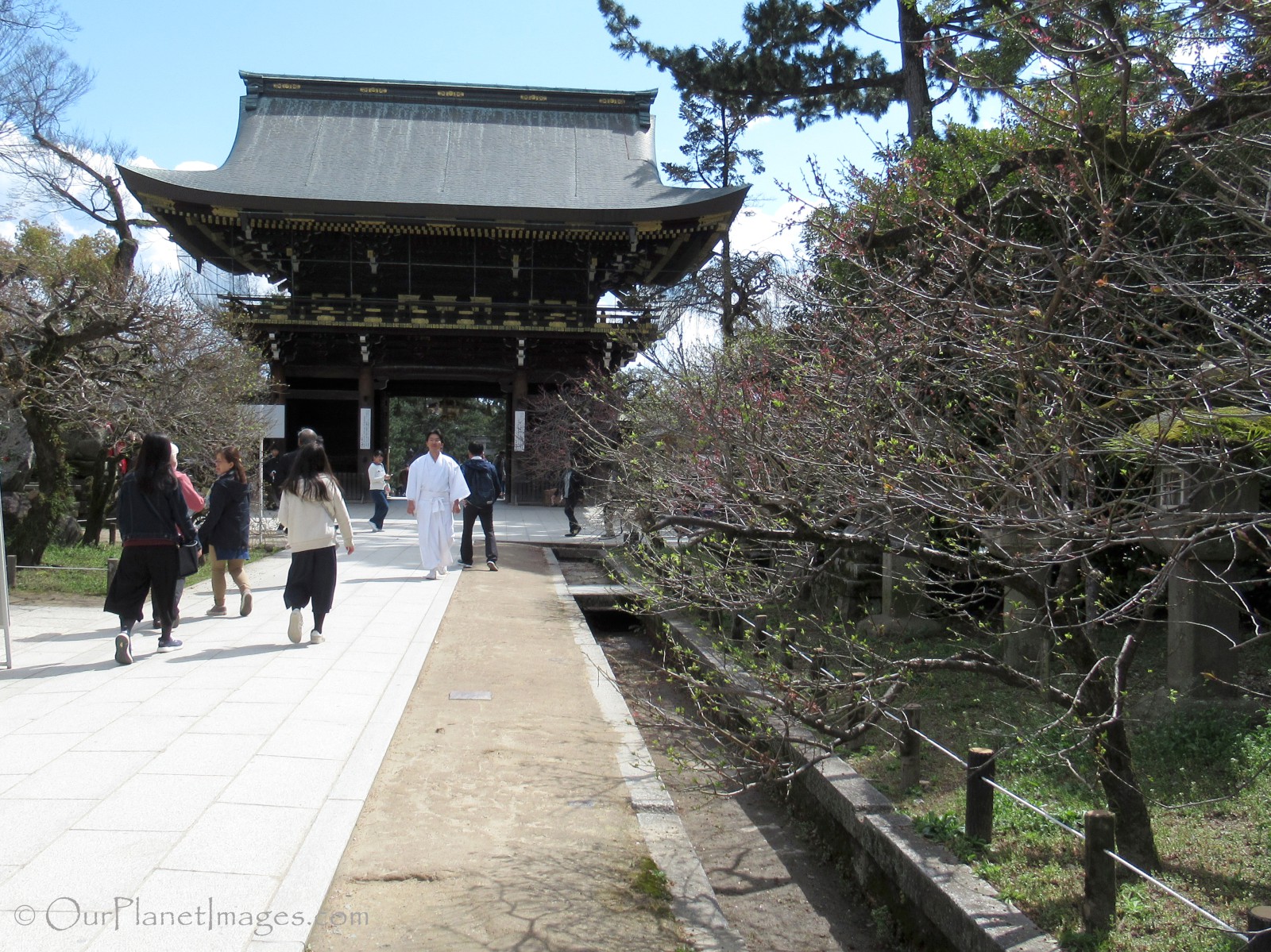
Sacred Music Hall
Another of the more significant buildings in the shrine is the Sacred Music Hall which is pictured below.
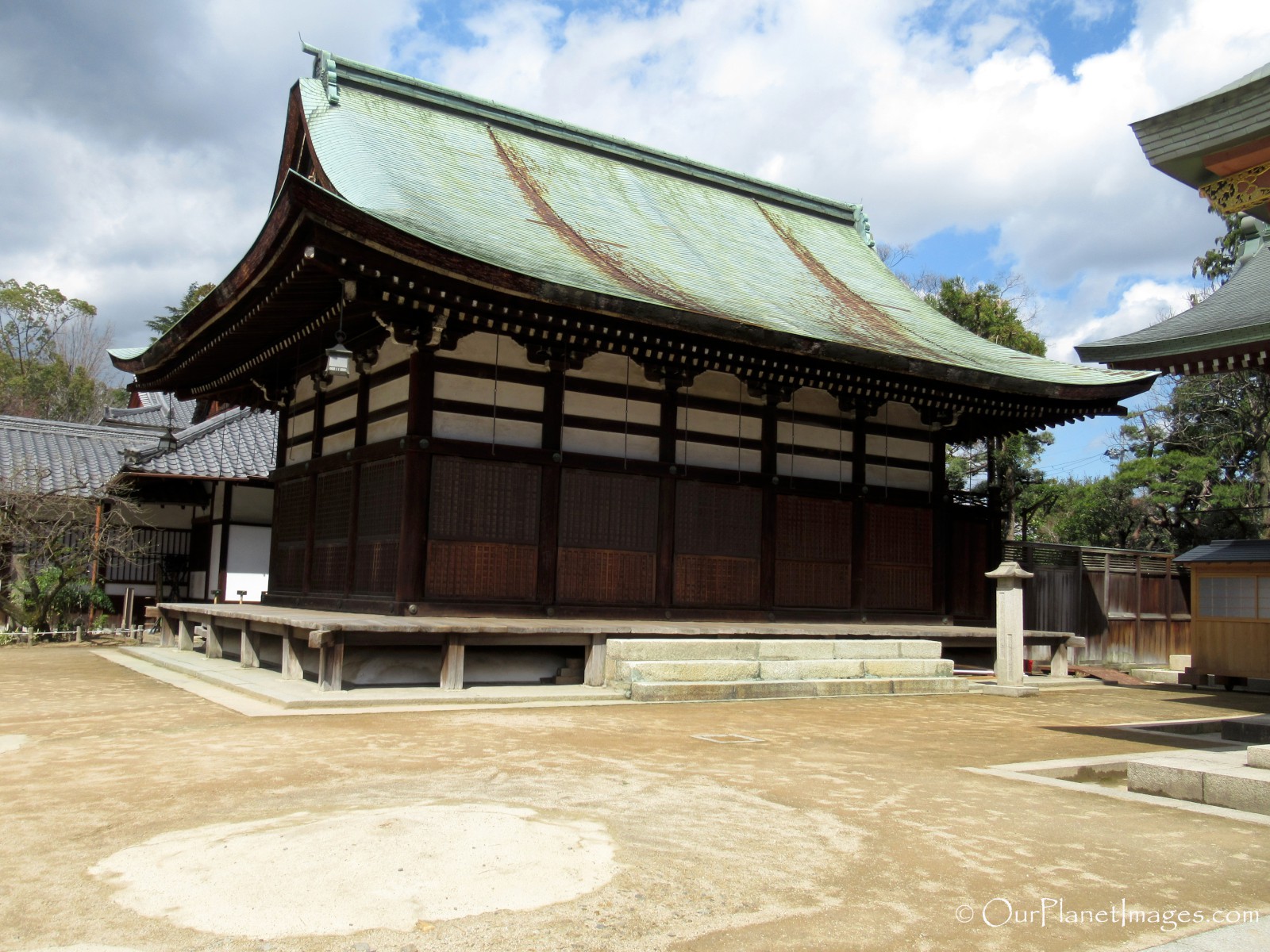
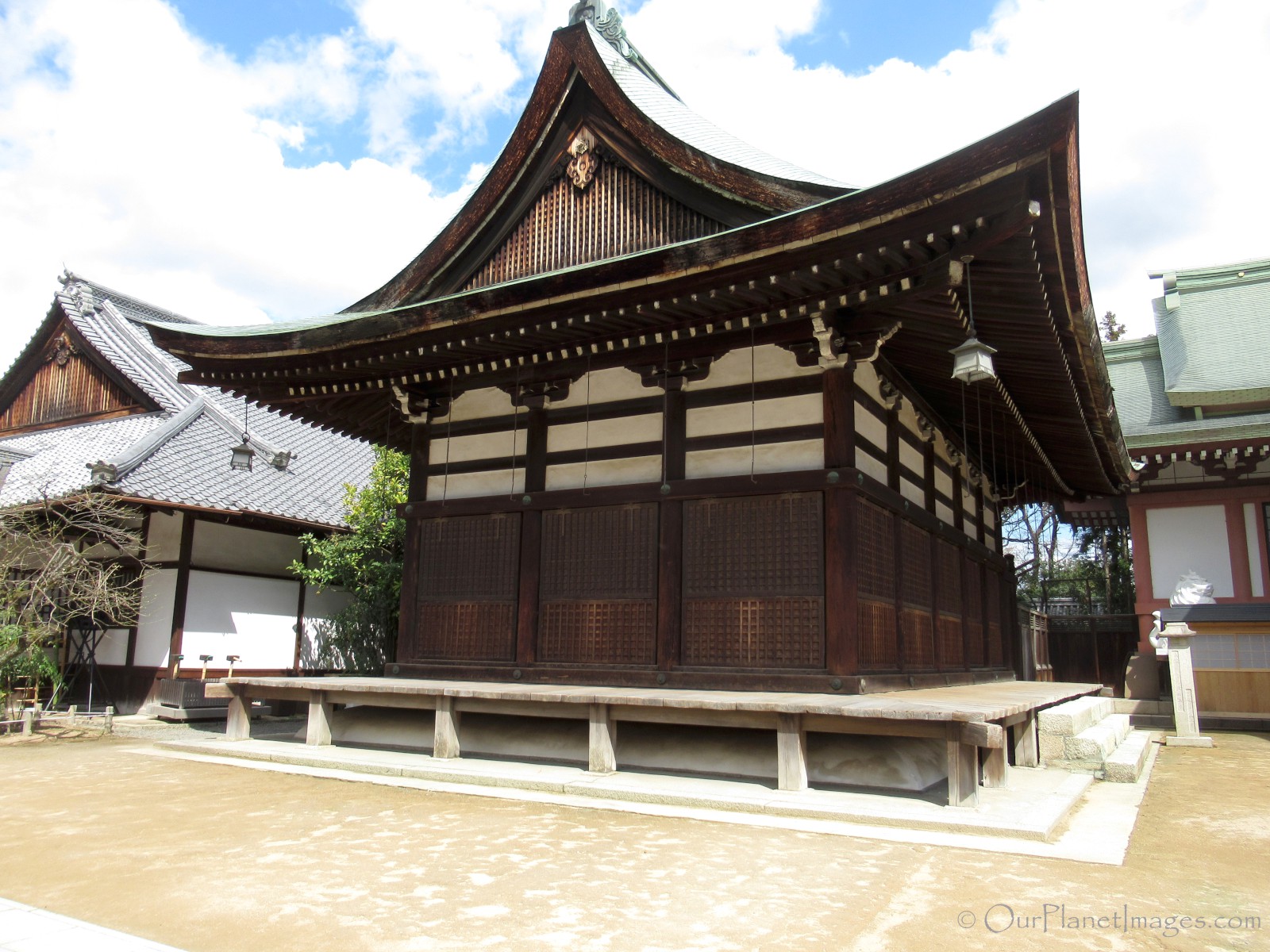
Good luck ox
One of the more interesting artifacts in the shrine are the stone oxen. The approach to the main shrine worship hall has several stone oxen which link to the year of the ox in the Japanese calendar when the shrine was first dedicated.
Visitors to the shrine rub the statues for good luck and relief from aches and pains. They will first rub the part of their body where they have pain and then they will rub the ox in the same spot to transfer their pain to the ox.

Other places in the shrine
The Kitano Tenmangu Shrine consists of many buildings. Some buildings are large and others are small and are easily overlooked. The smaller structures that I notices are shown below.
Shiratayu Shrine
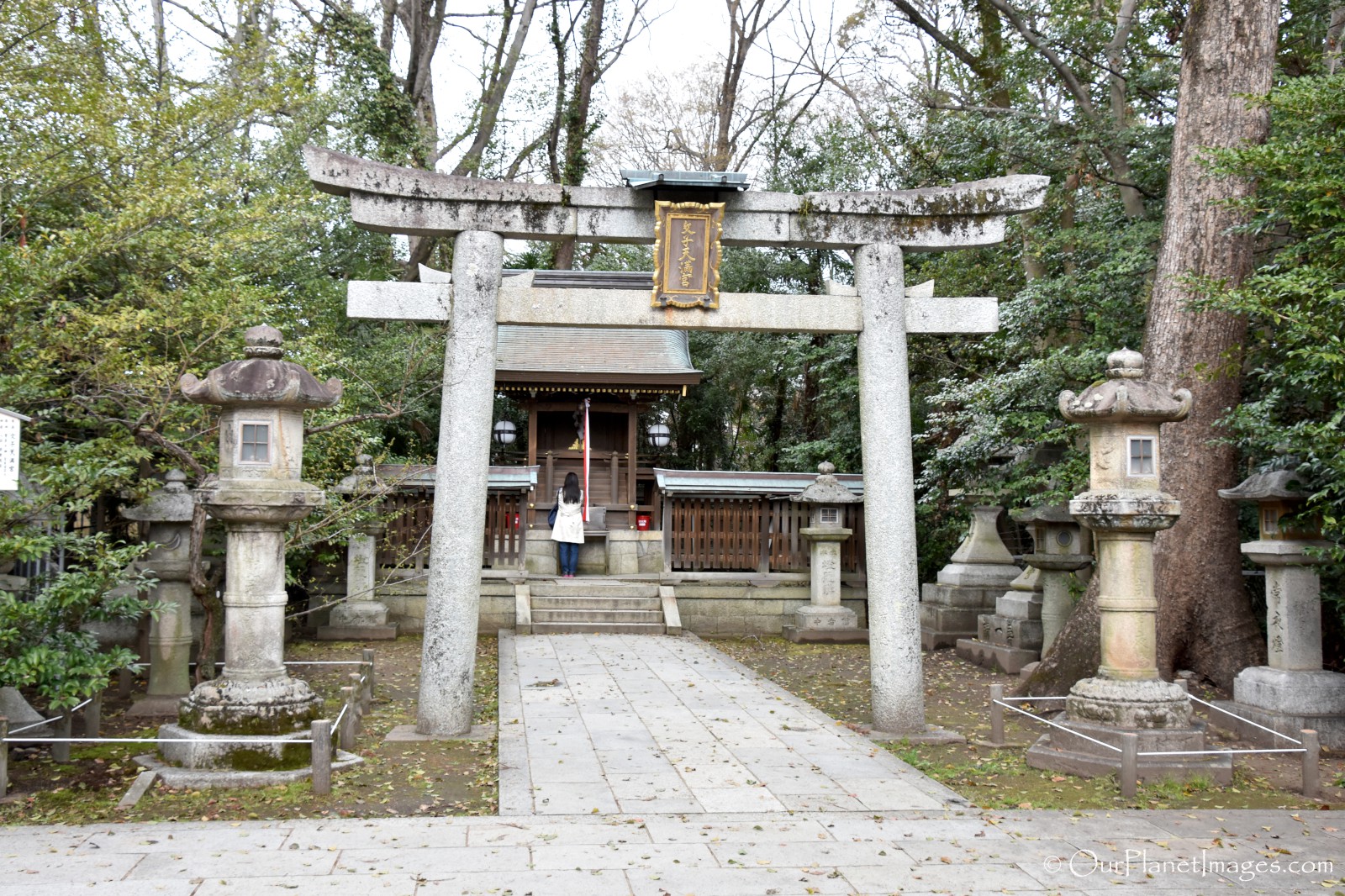
Shinmeisha
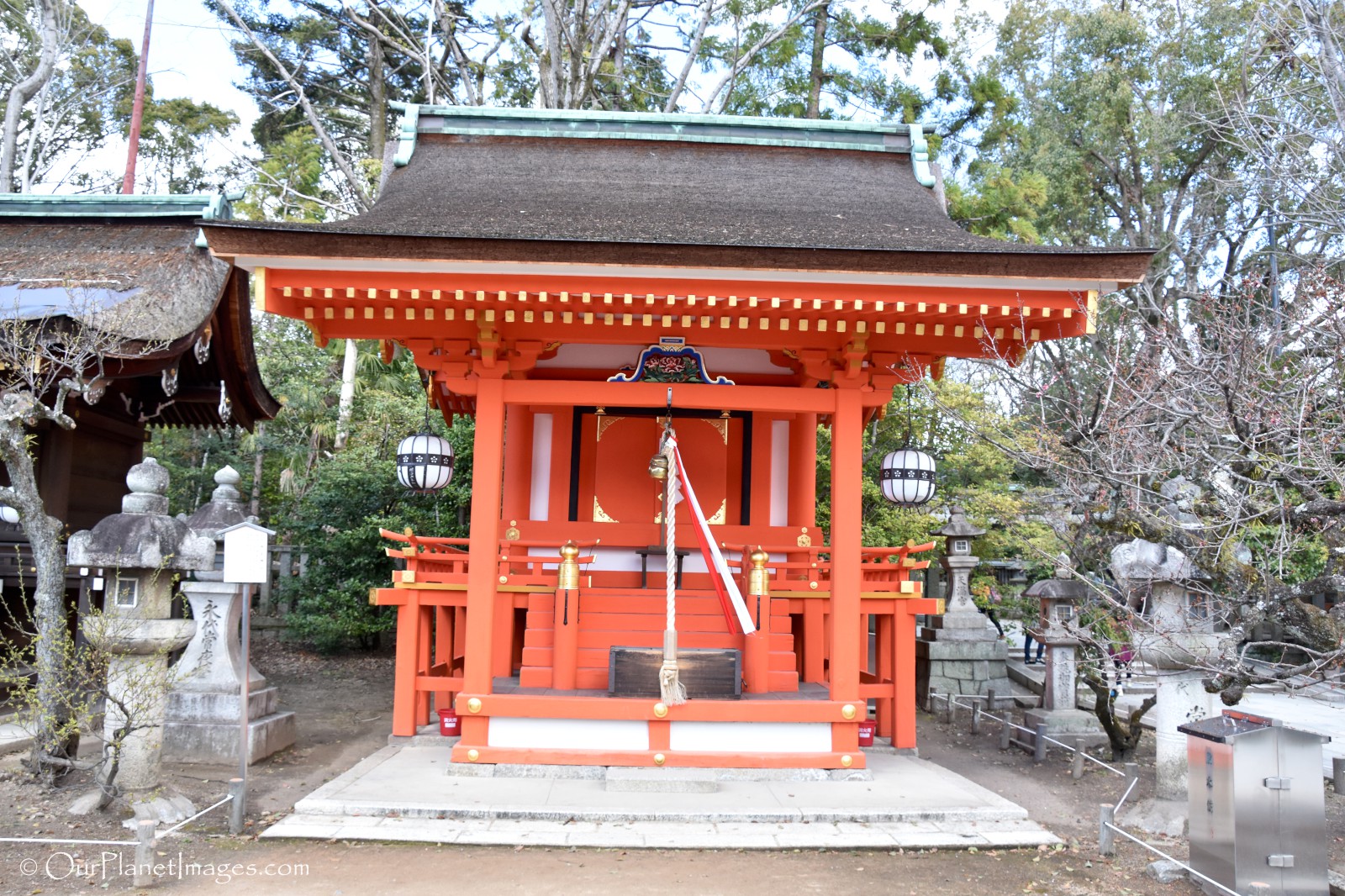
Kitamon
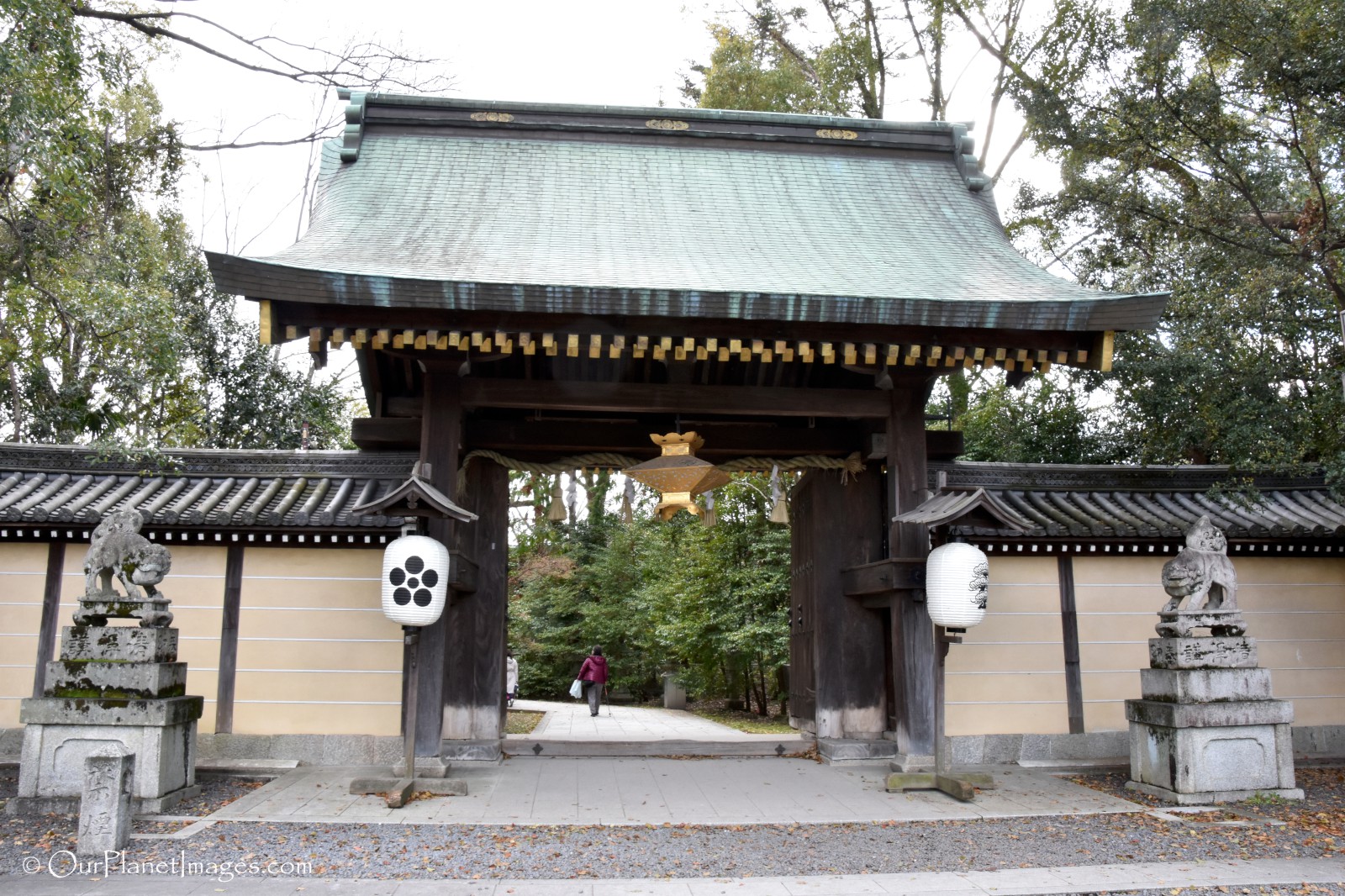
Lanterns
Lanterns are located throughout the shrine. There are many stone lanterns but there are also paper lanterns and brass lanterns. Photos of the different types of lanterns are shown in the photos below.
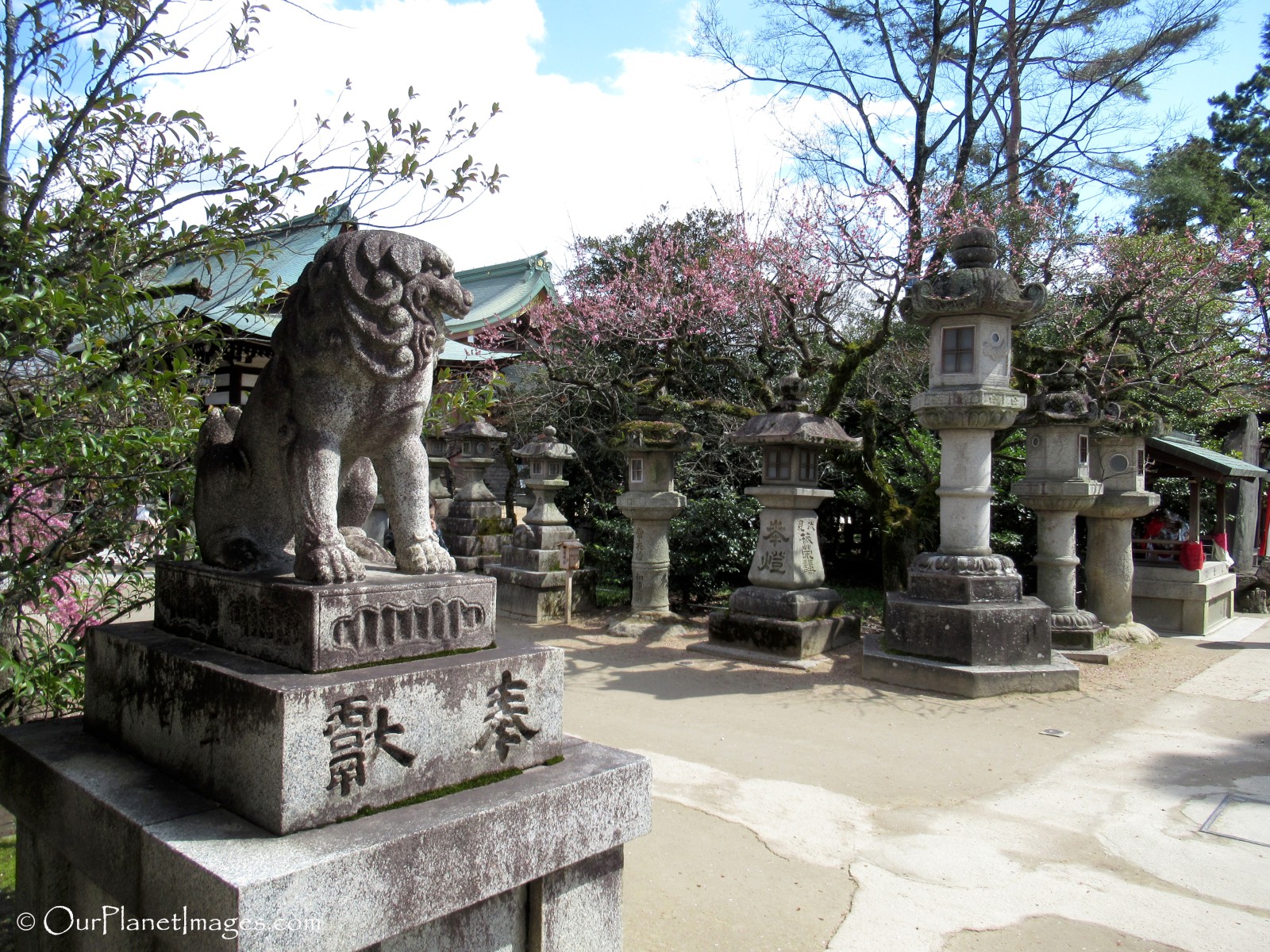
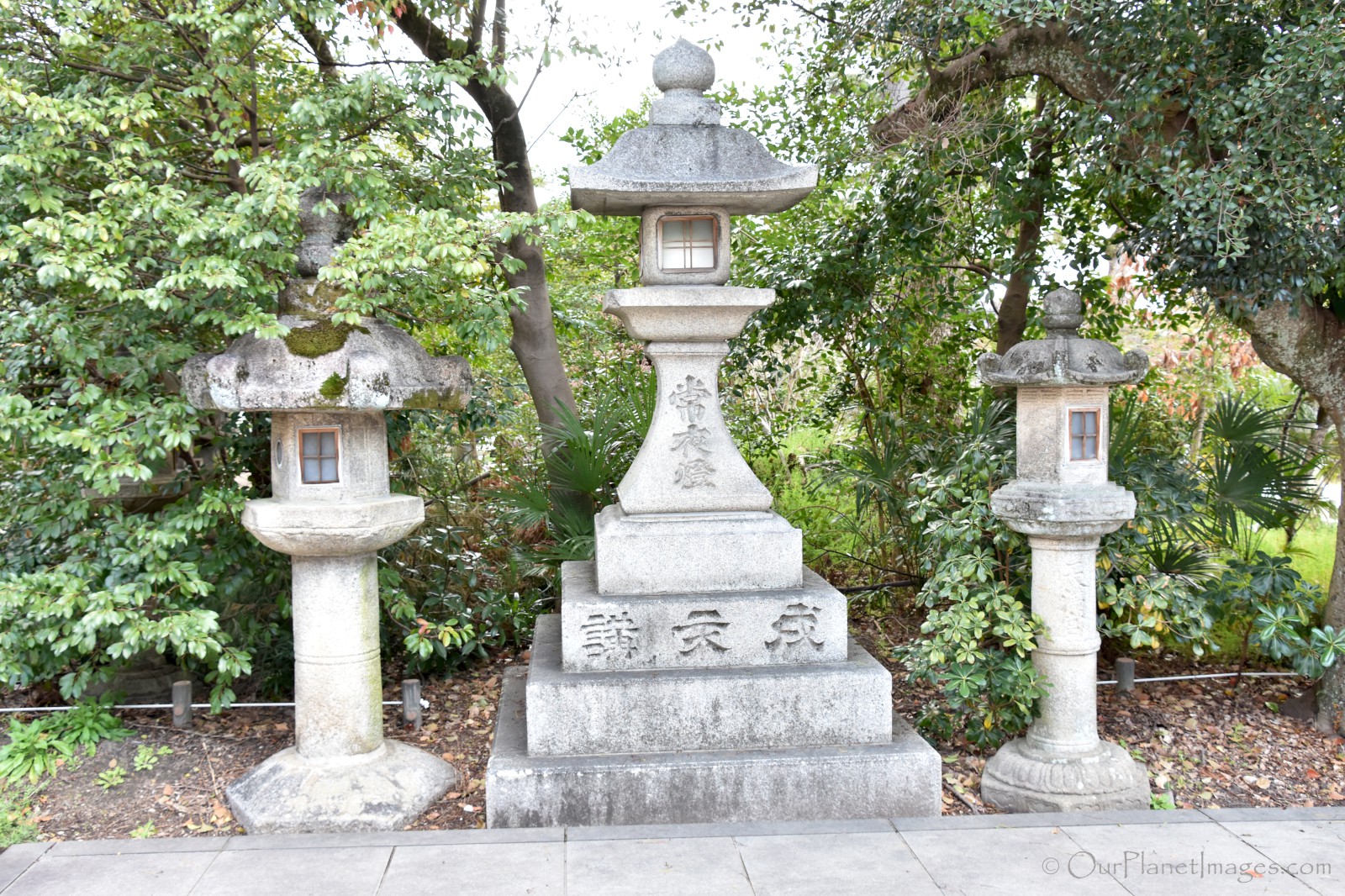
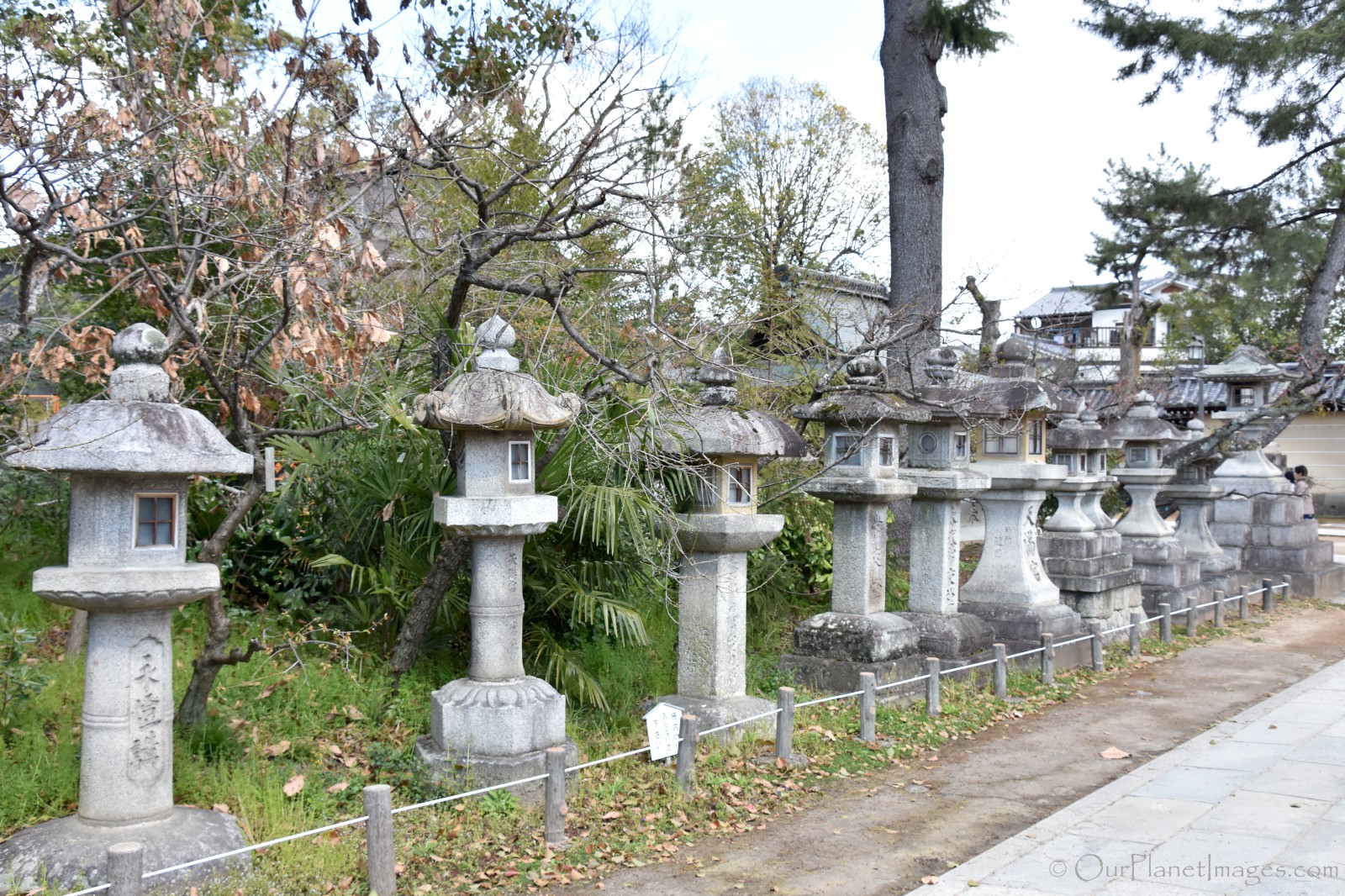
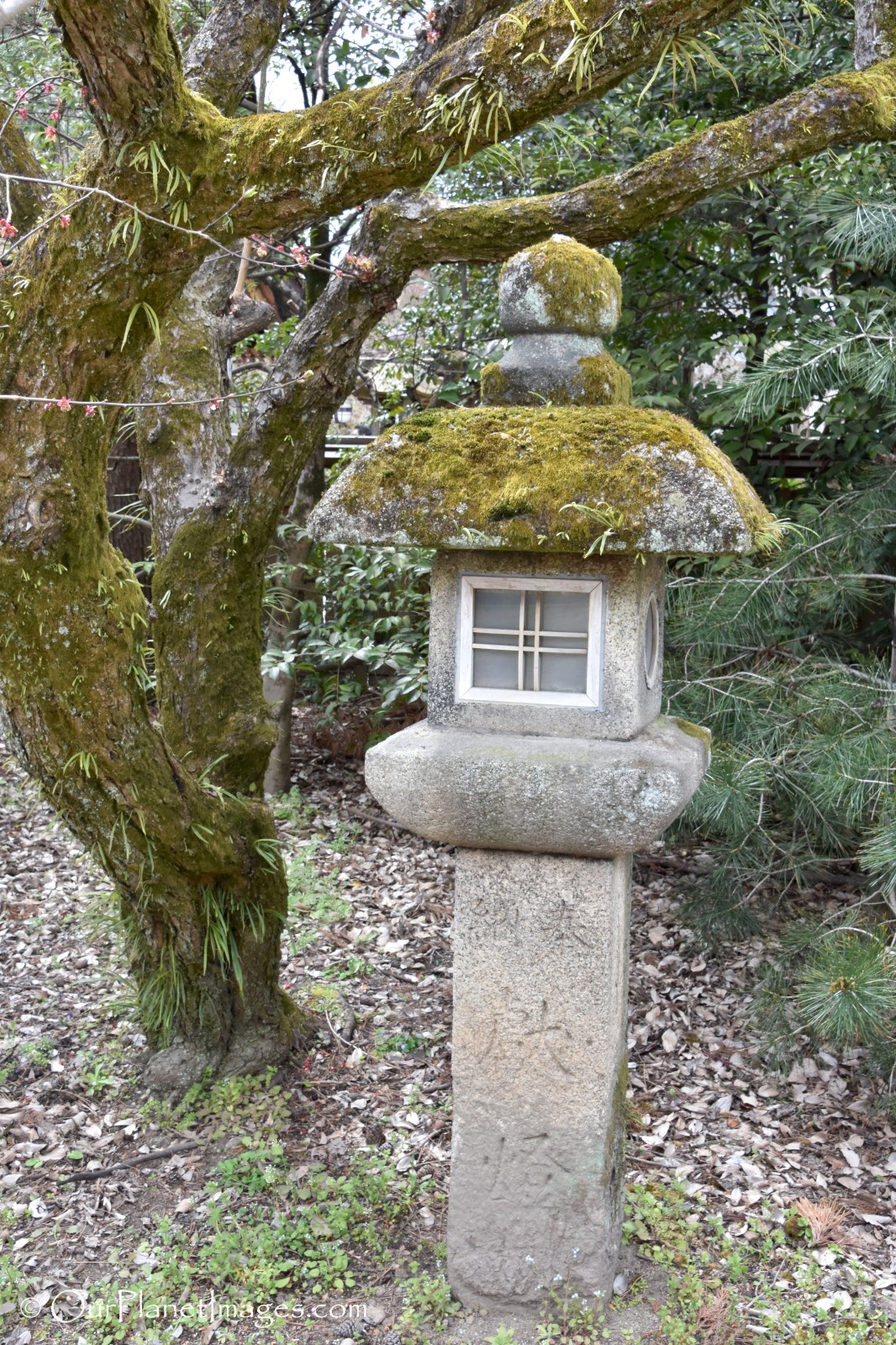
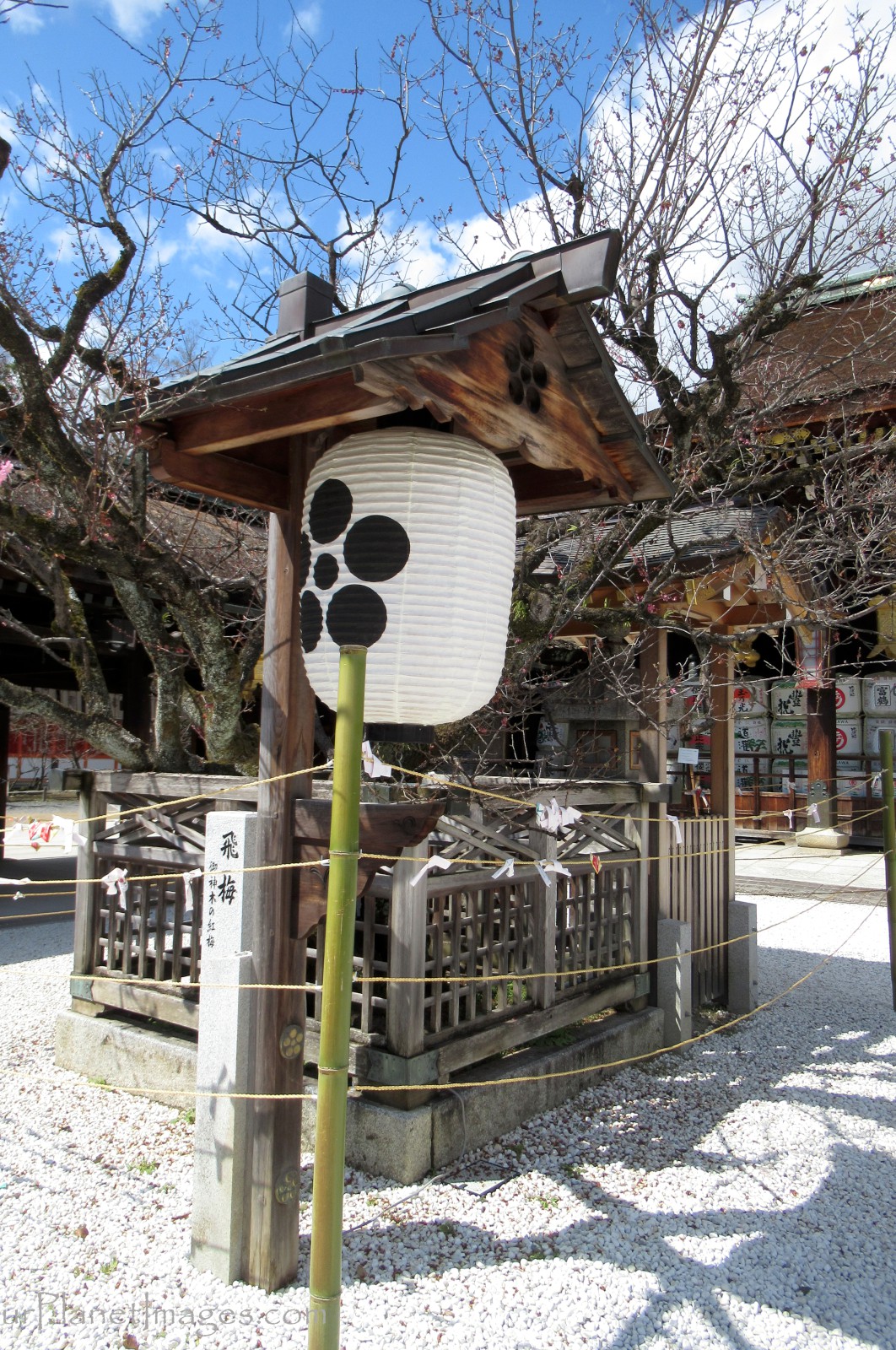
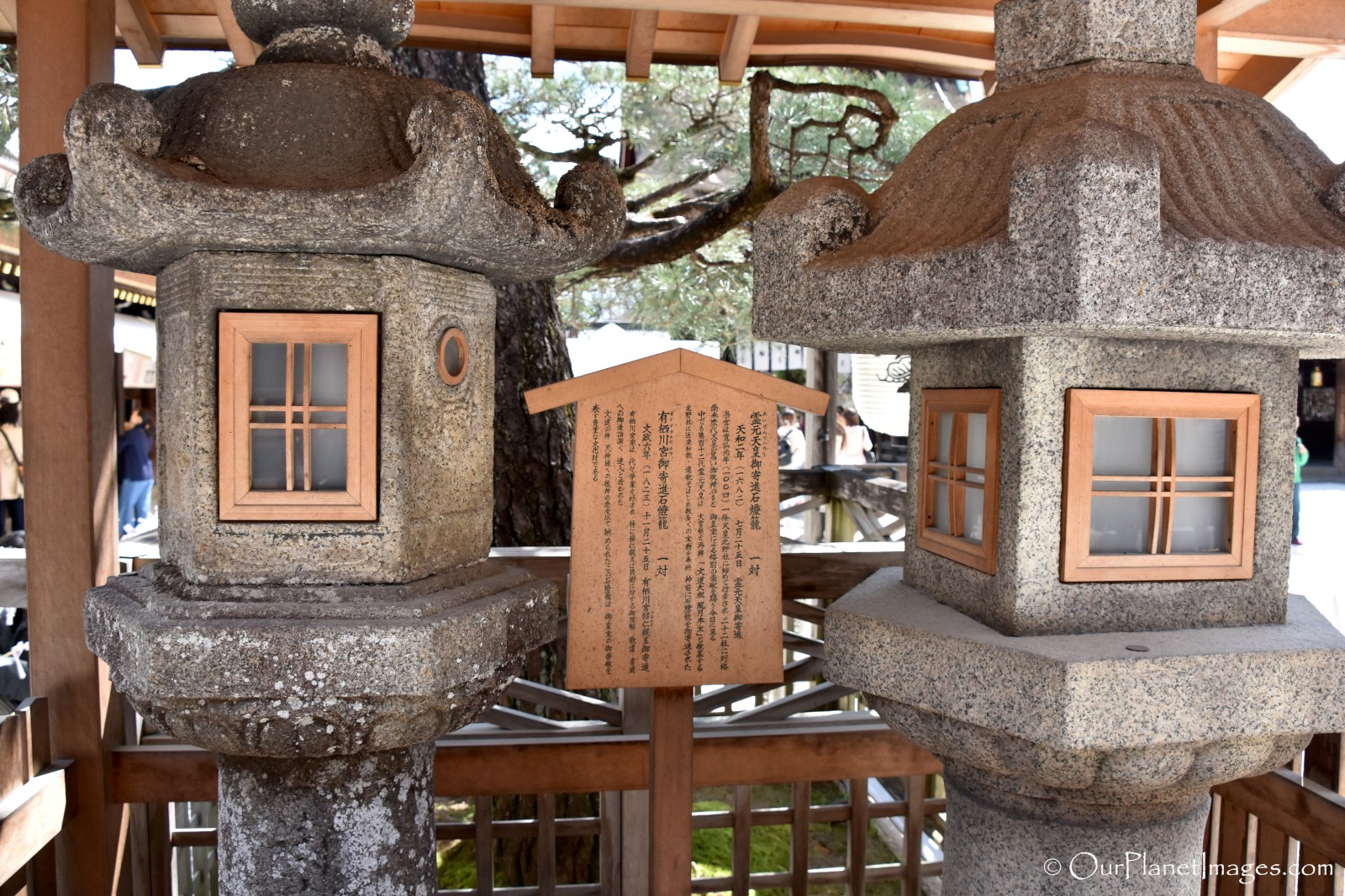
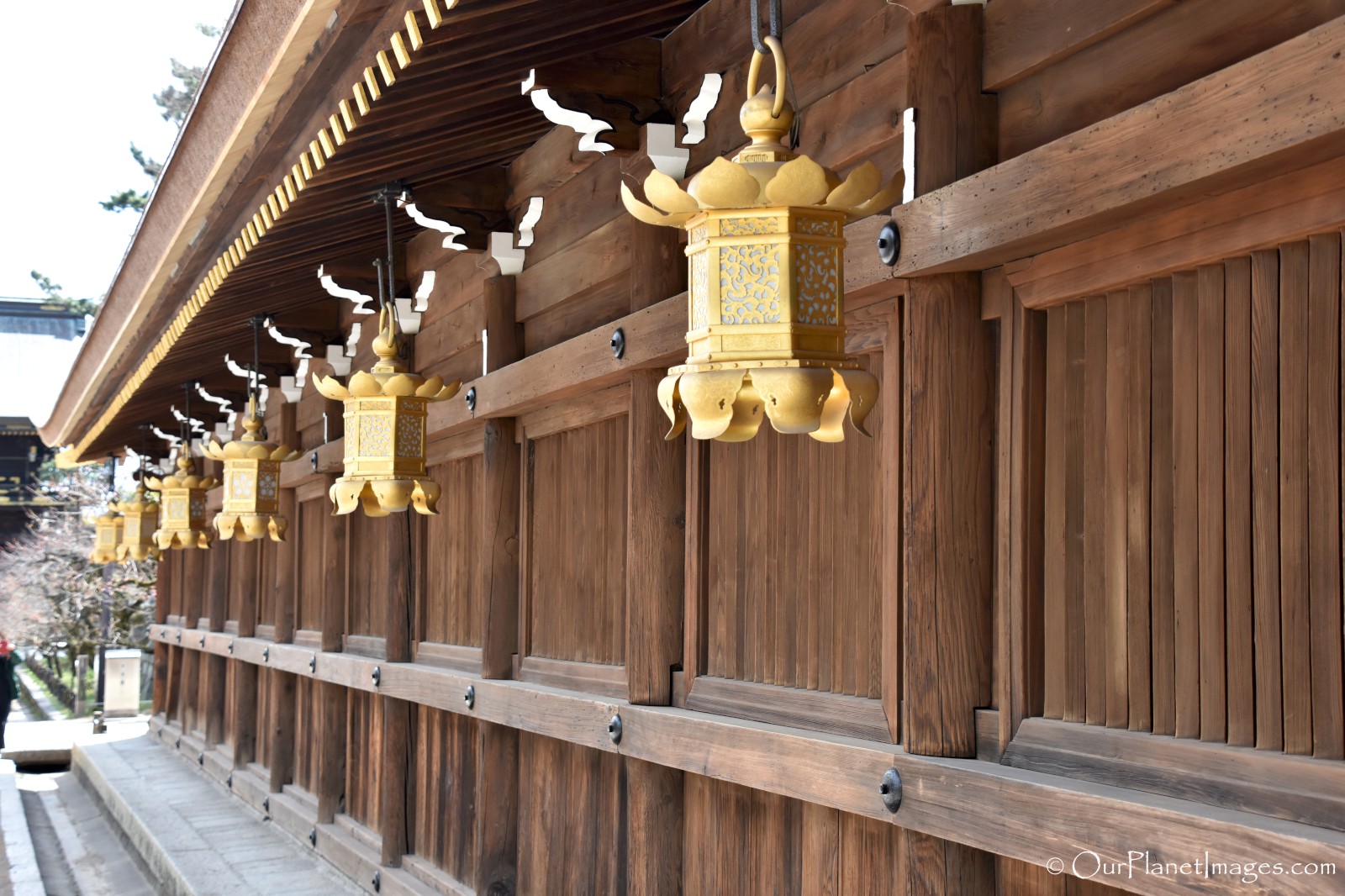
The Dust on My Shoes
The Kitano Tenmangu Shrine is an important shrine in Kyoto but it is not the most impressive shrine or temple that I have visited in Japan. There are many more architecturally impressive religious sites to visit. However, when the plum trees are blooming in the springtime or when the leaves are changing colors in the fall the shrine is really attractive.
My visit was after the plum trees bloomed and as the cherry trees were starting to bloom. There were some cherry trees blooming but it was a little before the full bloom in Kyoto. Other areas of Japan were in full bloom but Kyoto cherry trees bloom a little latter than the trees in Osaka or Tokyo.
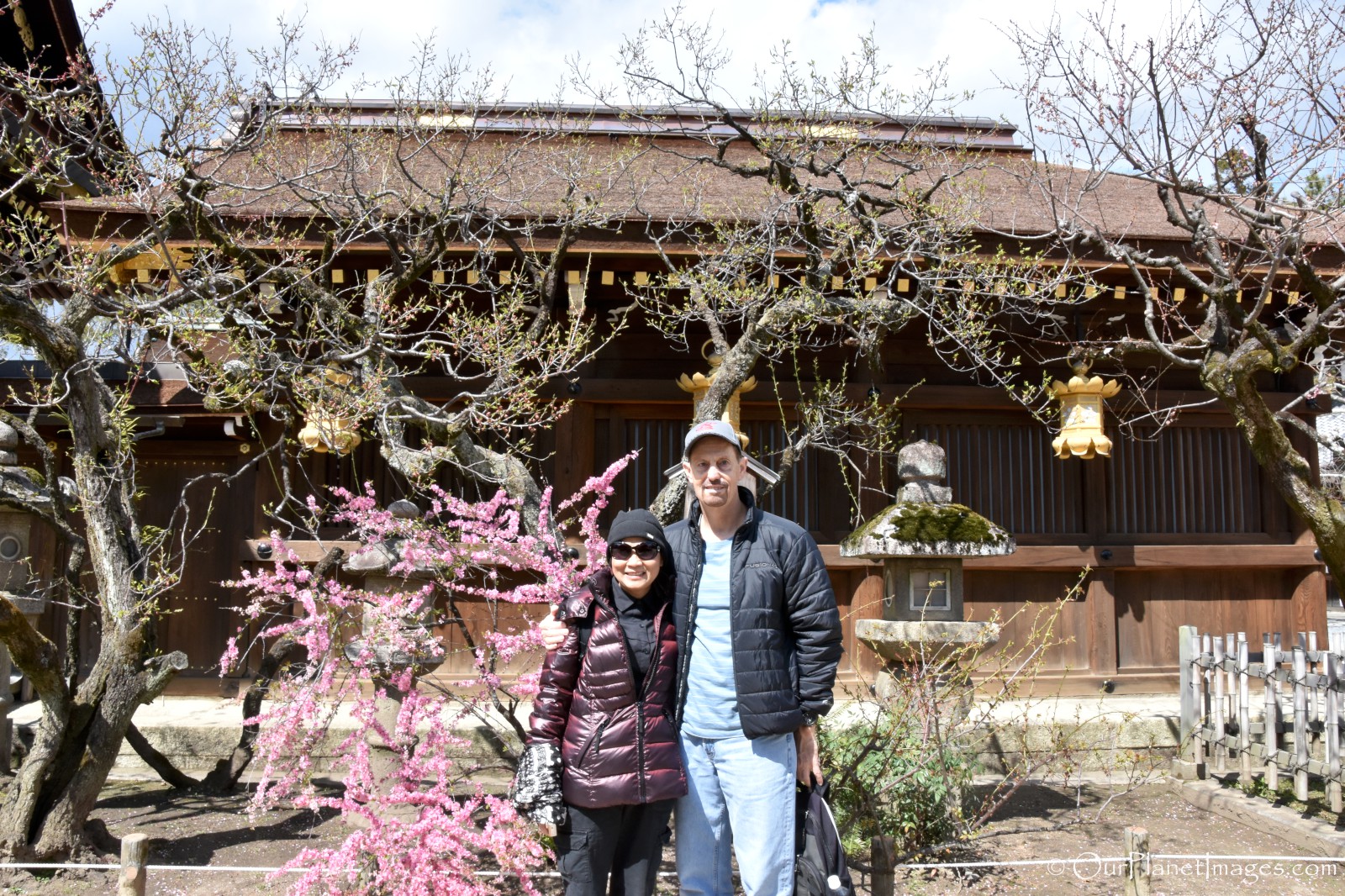
Some sites are significantly better depending on the weather or the time of year. Make sure to schedule you trip during the best timing for the places that you want to visit.
